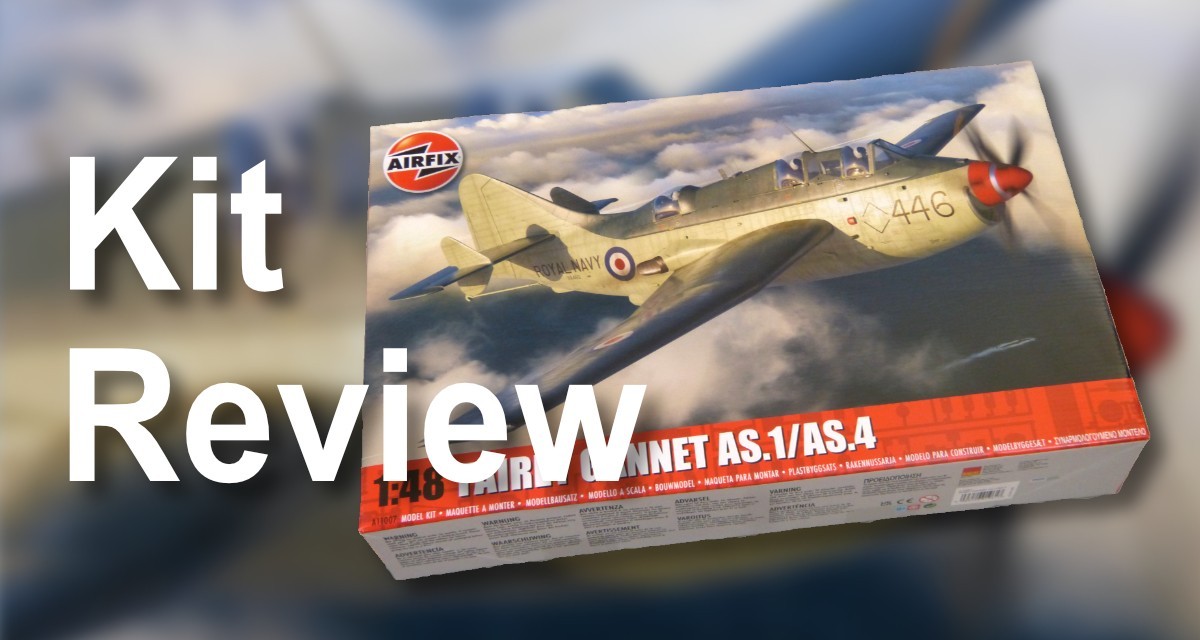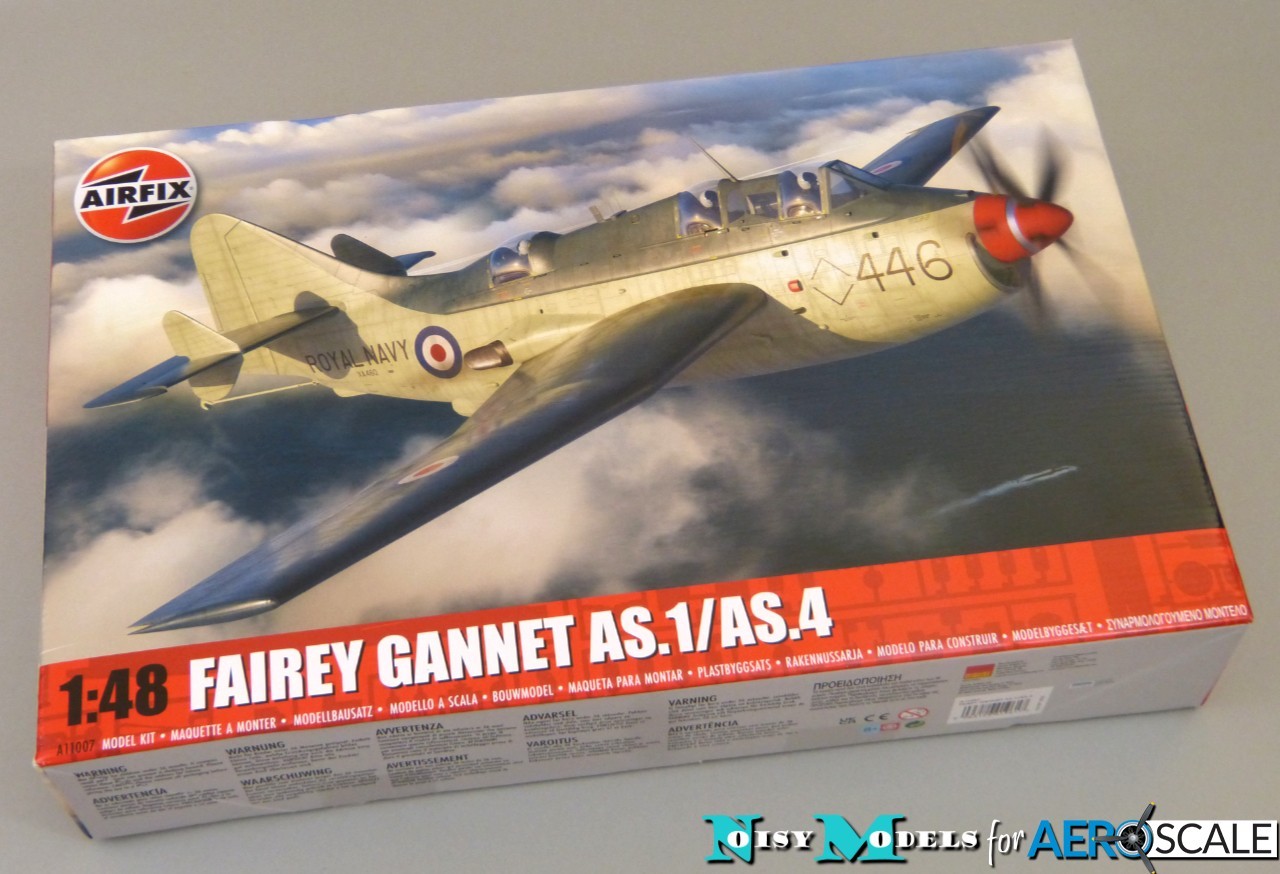
I've always had a soft spot for aviation's "ugly ducklings", and the Fairey Gannet ranked high among them during my childhood in the 1960s. With its portly fuselage, cranked wings and extra "tail feathers", it was never likely to win any beauty contests, but the Gannet proved very successful in strike, anti-submarine and early warning roles. Almost 350 Gannets were built between 1953 and 1959, and the aircraft went on to serve in a variety of roles for around 25 years with the navies of four nations.
The Gannet was previously only available in 1:48 as short-run kits, so it's very welcome to see Airfix release it as a mainstream model using the latest production techniques.
Airfix's new 1:48 Gannet arrives in a very impressive top-opening box. It really underlines the value of good packaging and design, because it totally dominated the window display at Upstairs Downstairs in Sandown (a great model shop to visit if you're on holiday or a day-trip to the Isle of Wight) - and I was sold on it instantly!
There's no space wasted space, and the big box is packed to the brim. All the parts arrived in perfect condition in my example, and are spread across 8 main runners. The Gannet comprises:
315 x grey styrene parts
19 x clear styrene parts
Decals for 3 x colour schemes


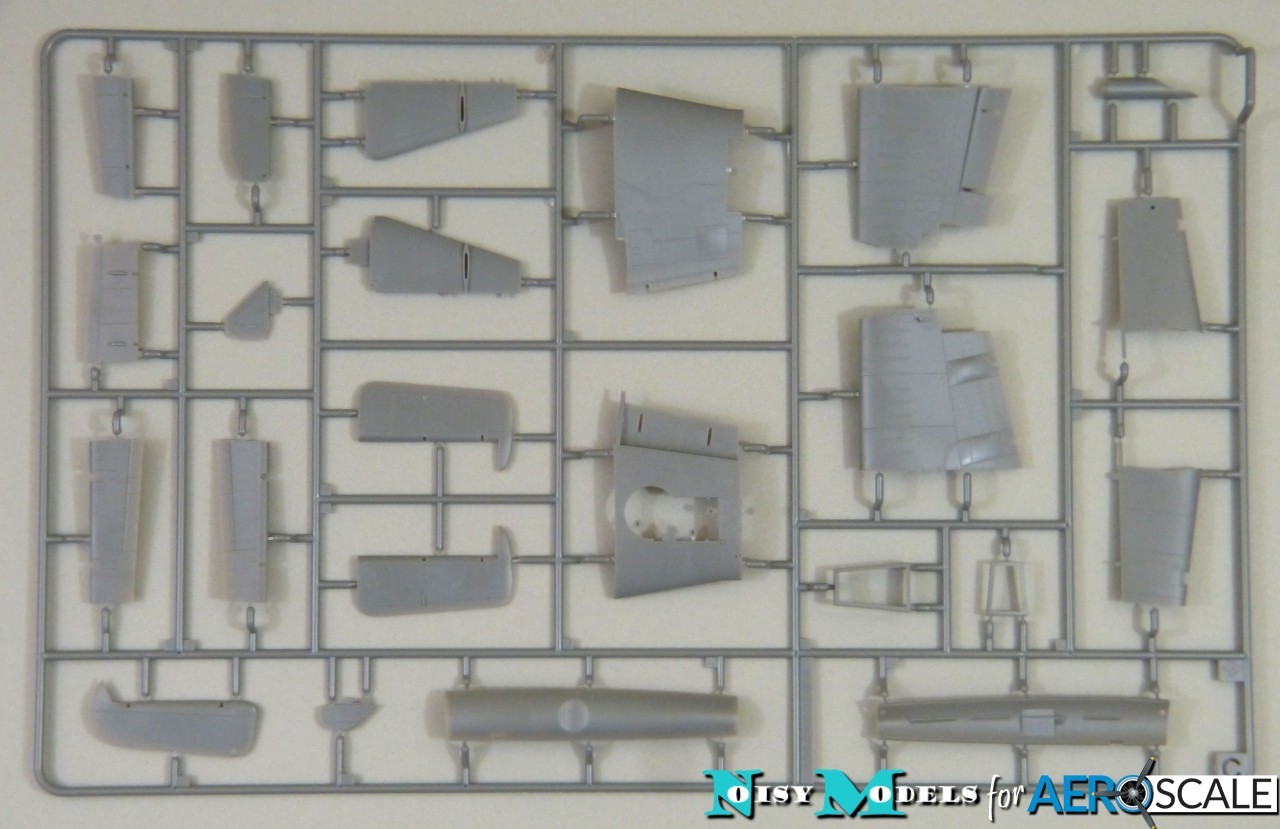



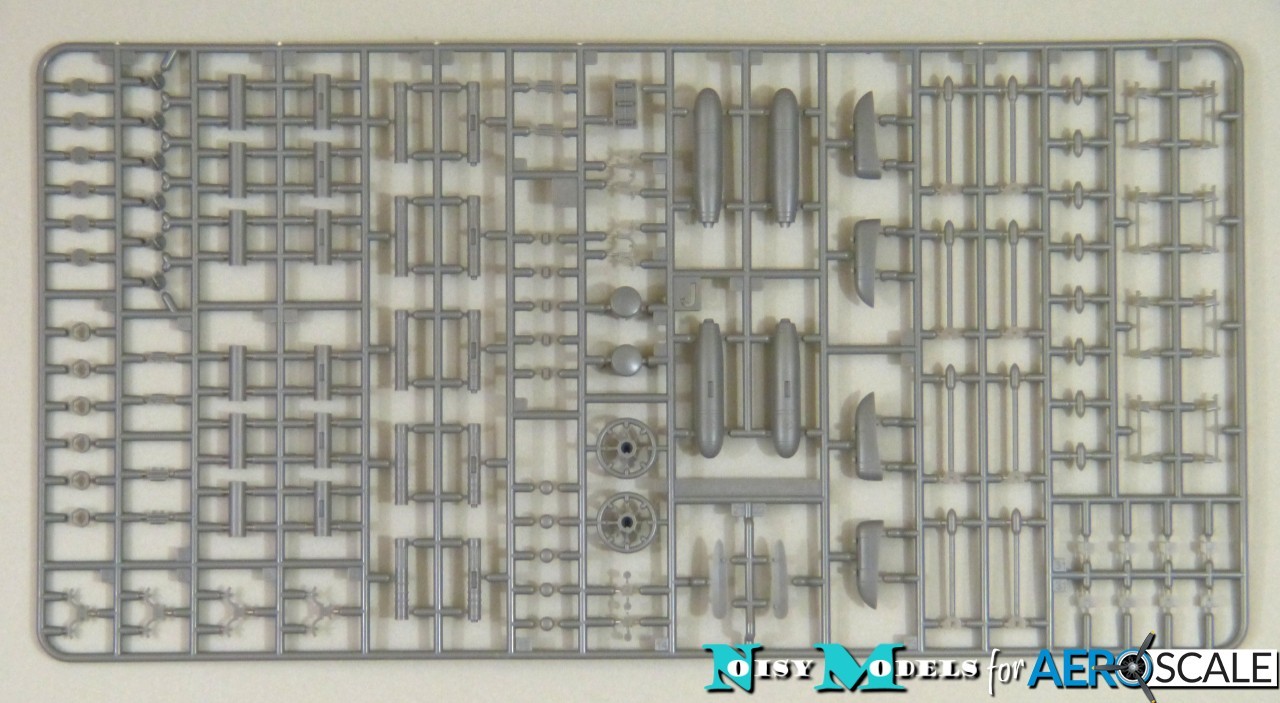

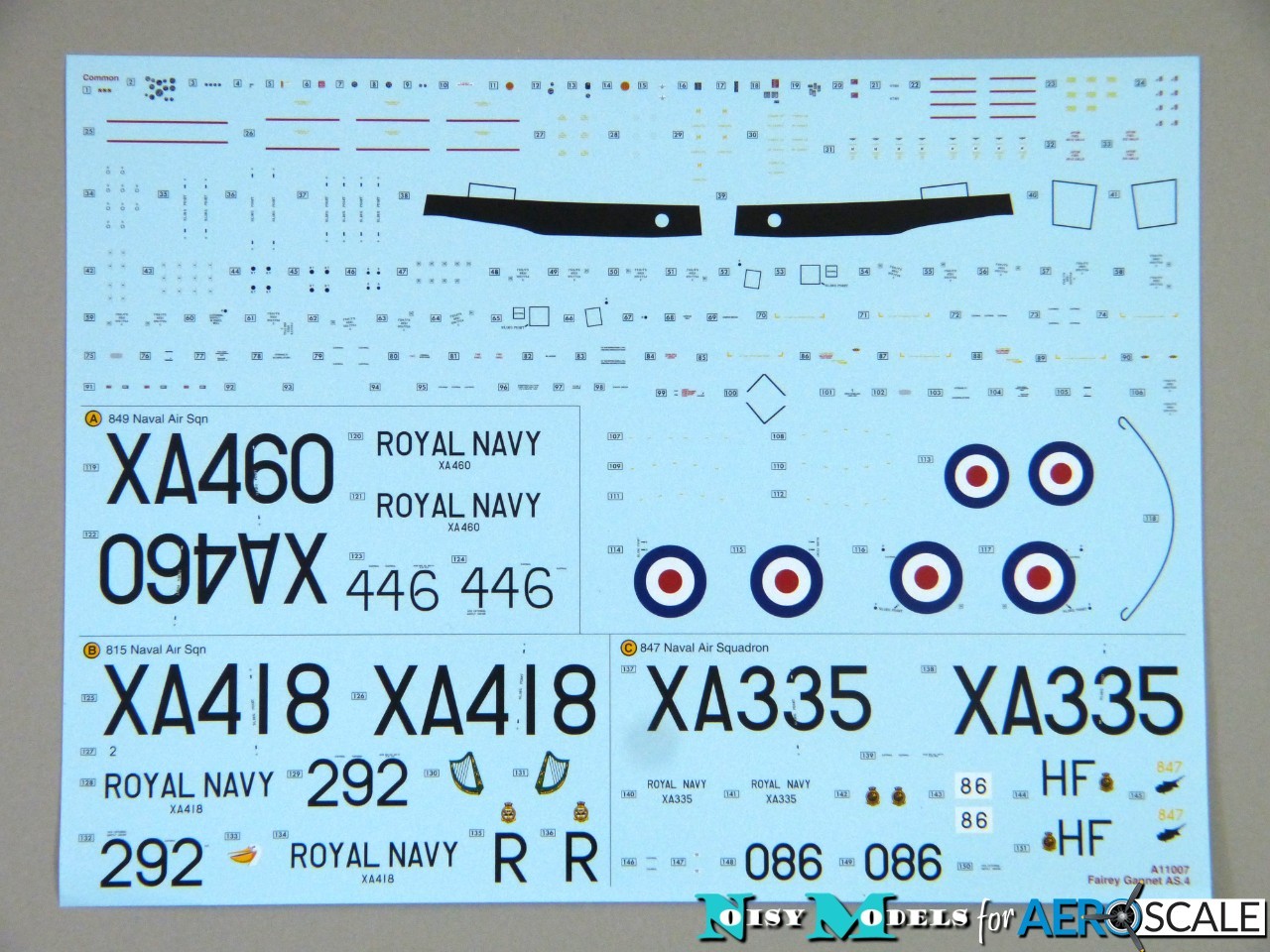
Once you've got over the sheer number of parts and runners, the next impression is the excellent quality of the moulding. There is no flash at all on my kit, it's free of any sink-marks or other issues. Ejector pins seem to have been placed sensibly to keep the resulting marks safely out of sight on the finished model.
The surface finish comprises crisp panel lines, with lightly embossed rivets and delicate raised details. It should look very good when painted, giving an impression of the bulk of the Gannet (8.75 tonnes fully laden). The cockpits, weapons bay and wing-fold details stand out even at first glance. Strictly speaking, the full-size Gannet features a lot of raised rivets and fasteners, so you could use 3D rivet decals as I reviewed recently (3D Decal Rivets | AeroScale) to represent them if you're a stickler for accuracy. Be prepared for a big job though...
Runner attachments for the main components are on the gluing surfaces to avoid damage to the exterior finish, so you'll need to spend a little while removing them before joining the parts.
Airfix offer the option to build the Gannet with its wings extended or double-folded into their distinctive "zig-zag", and the weapons bay can be displayed open or closed. Unusually for a modern kit, it can be built with its undercarriage retracted, but note that Airfix don't provide a stand on which to display it if you chose this option.
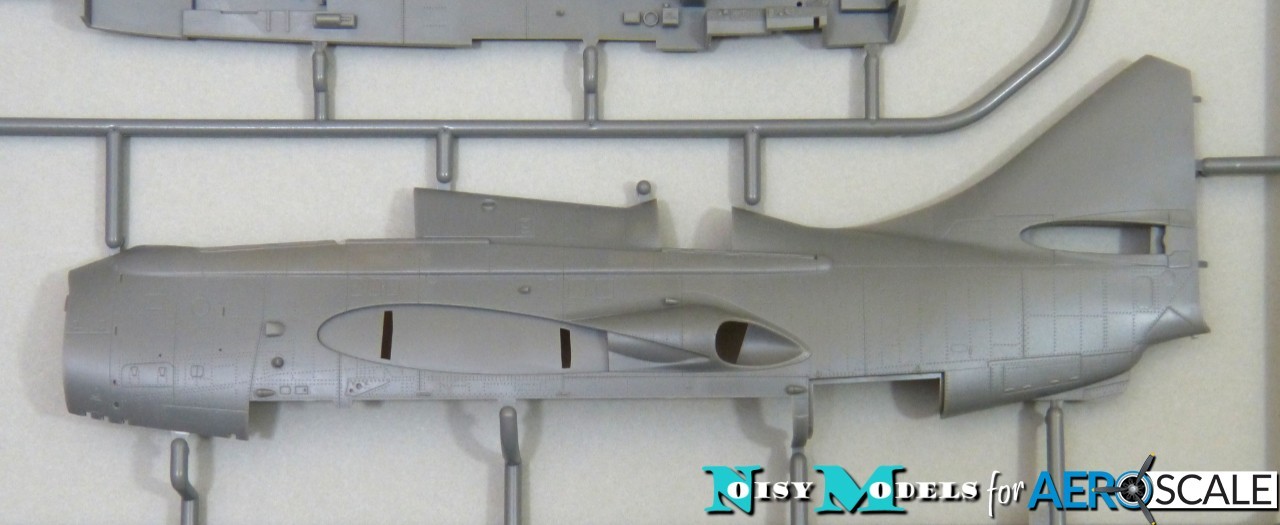
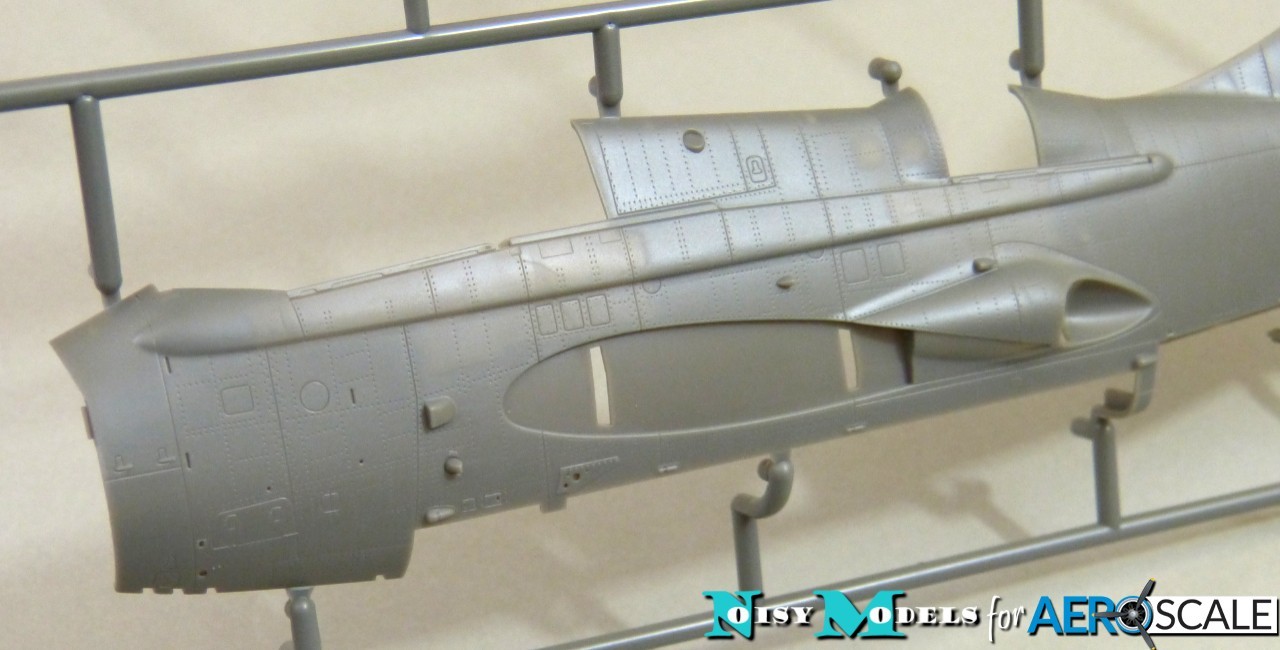
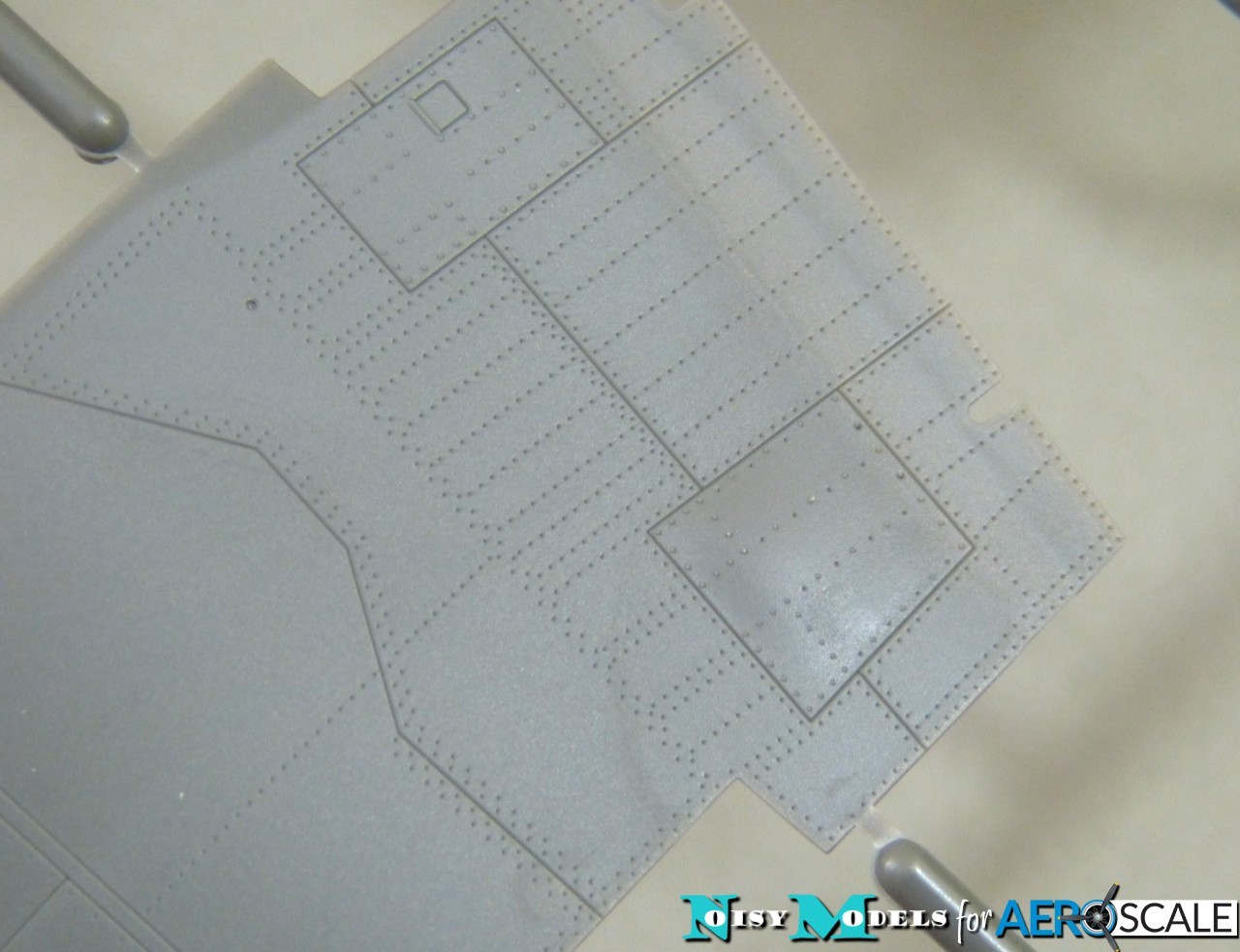
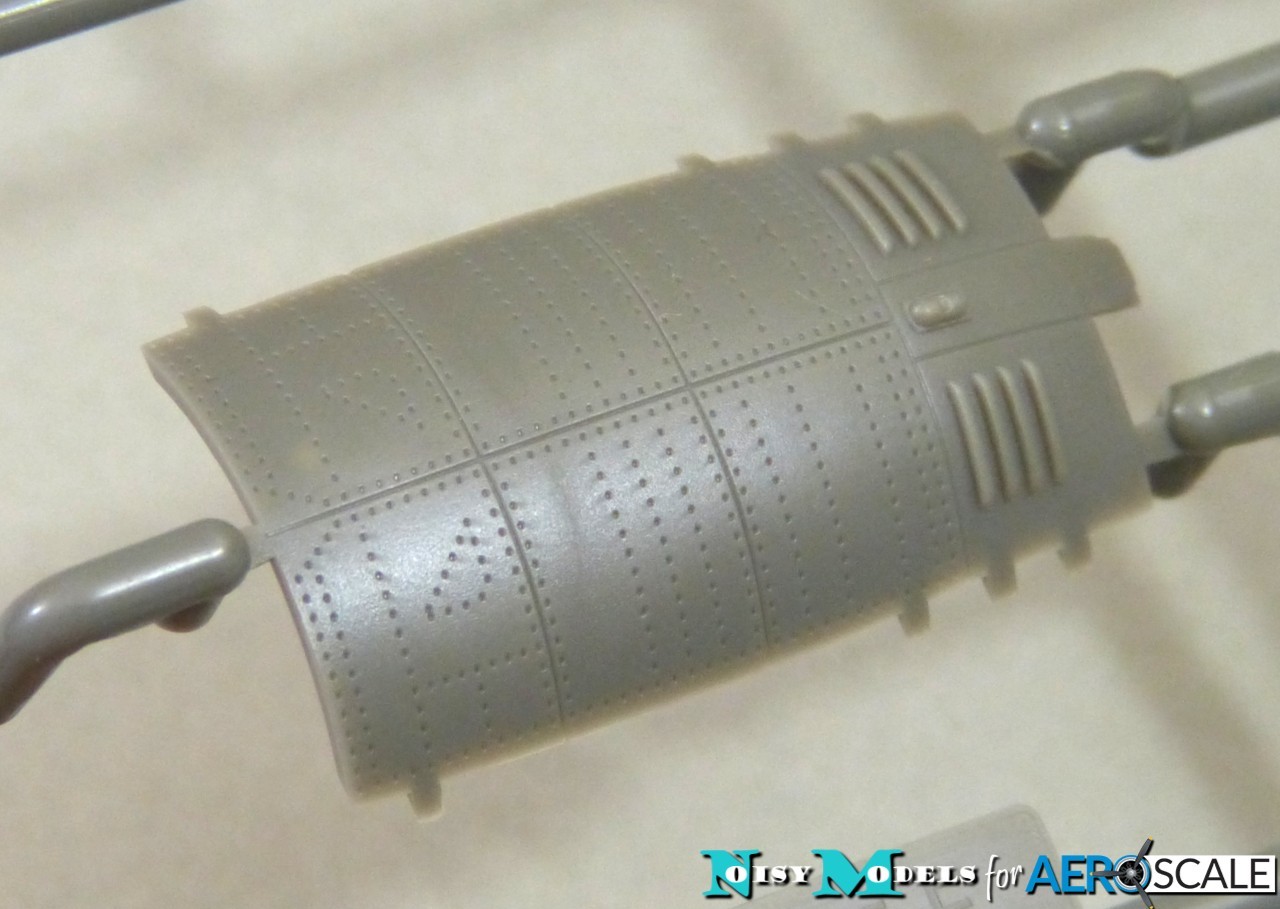
A Few Details
Construction begins with the weapons bay and nosewheel well, that combine with the floor for the three crew compartments to enclose a very solid set of wing spars. The overall assembly will provide a very sound foundation for the rest of the build.
Looking at the areas individually, the weapons bay and nosewheel well are nicely detailed, and the weapons bay in particular will look excellent with the mass of ordnance that Airfix provide. See below for details of that.
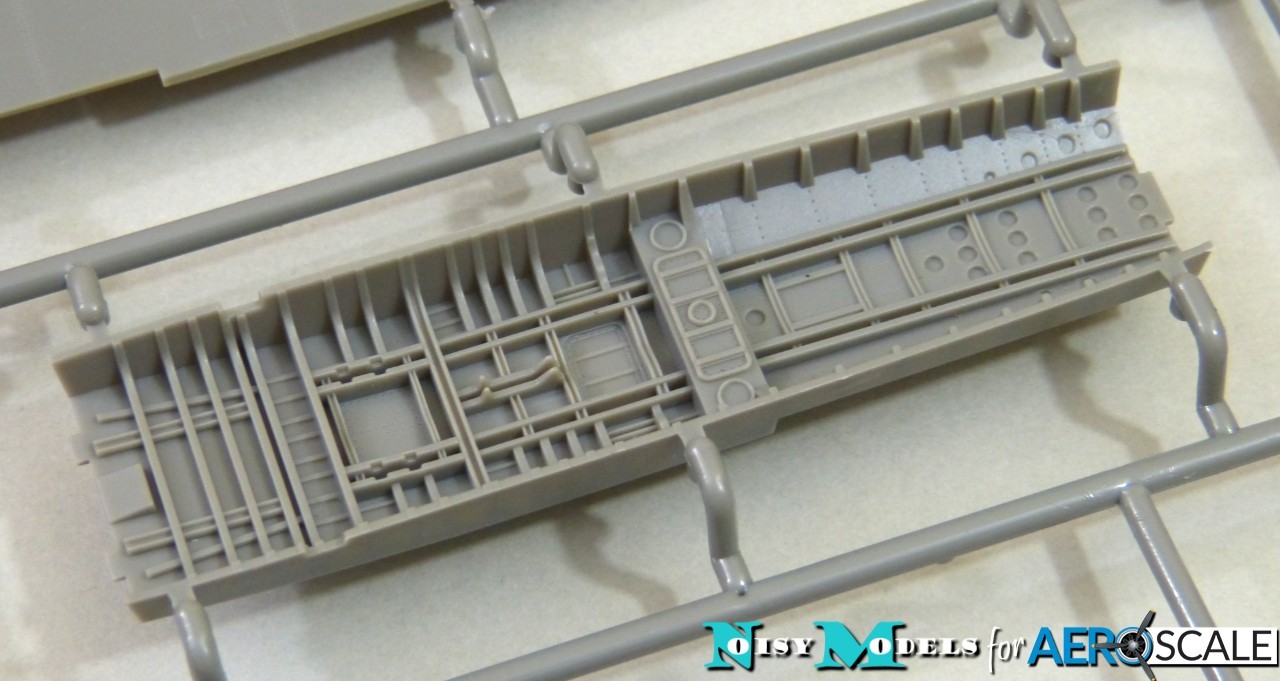
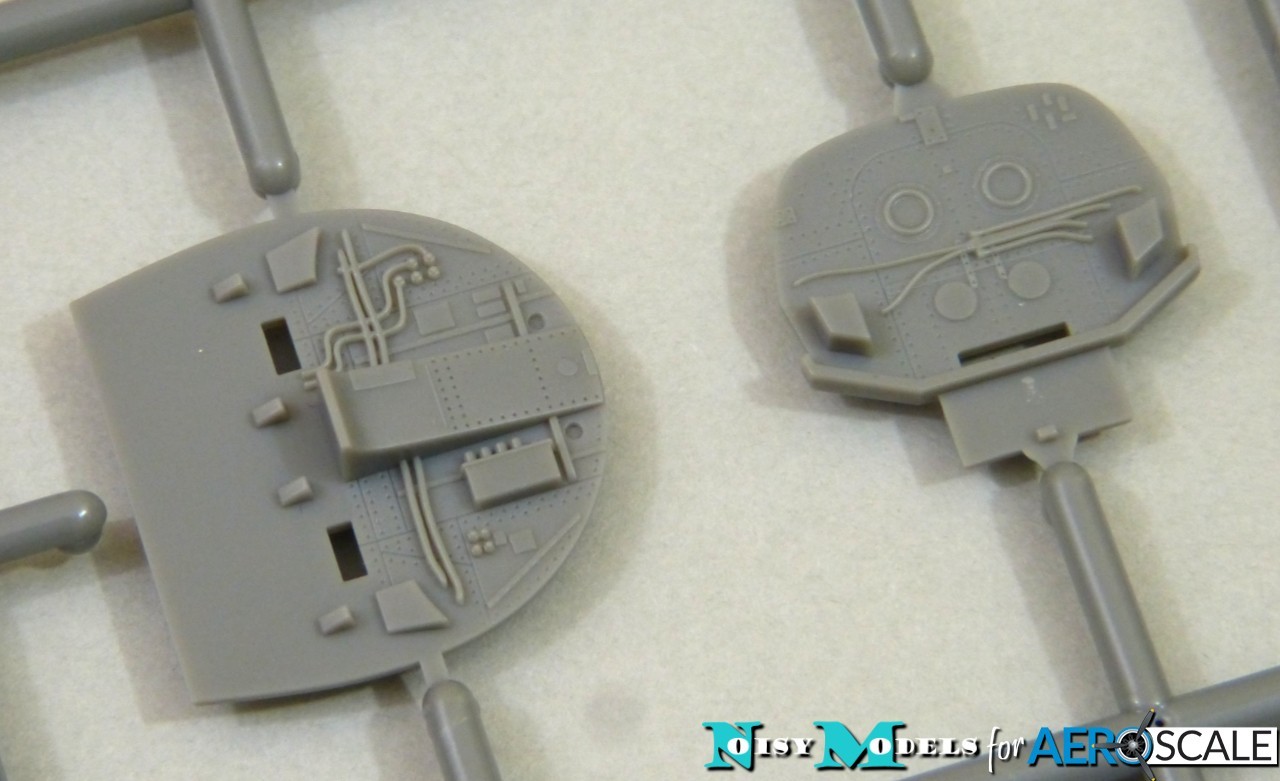

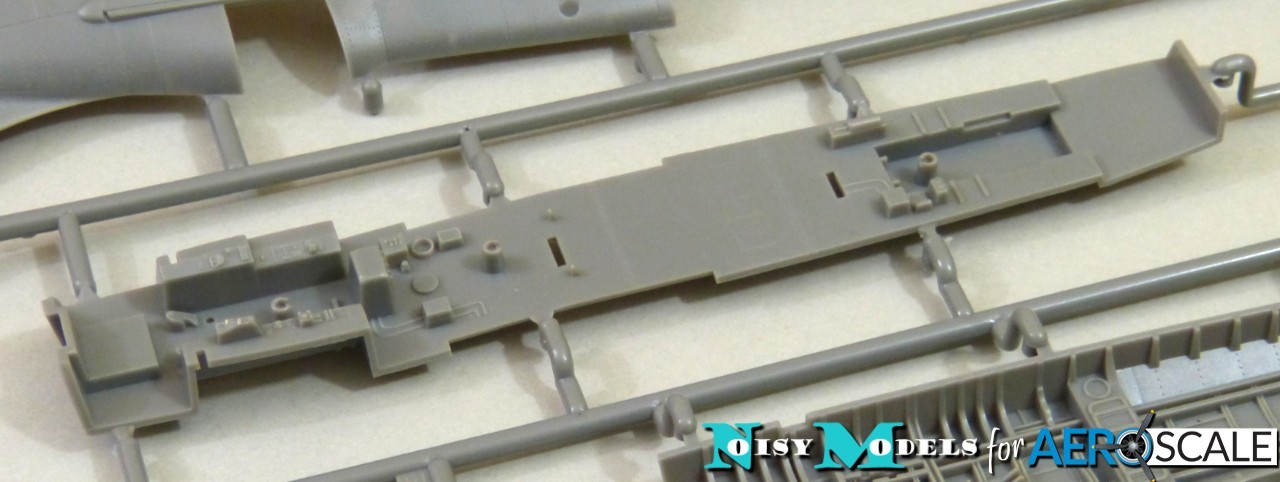
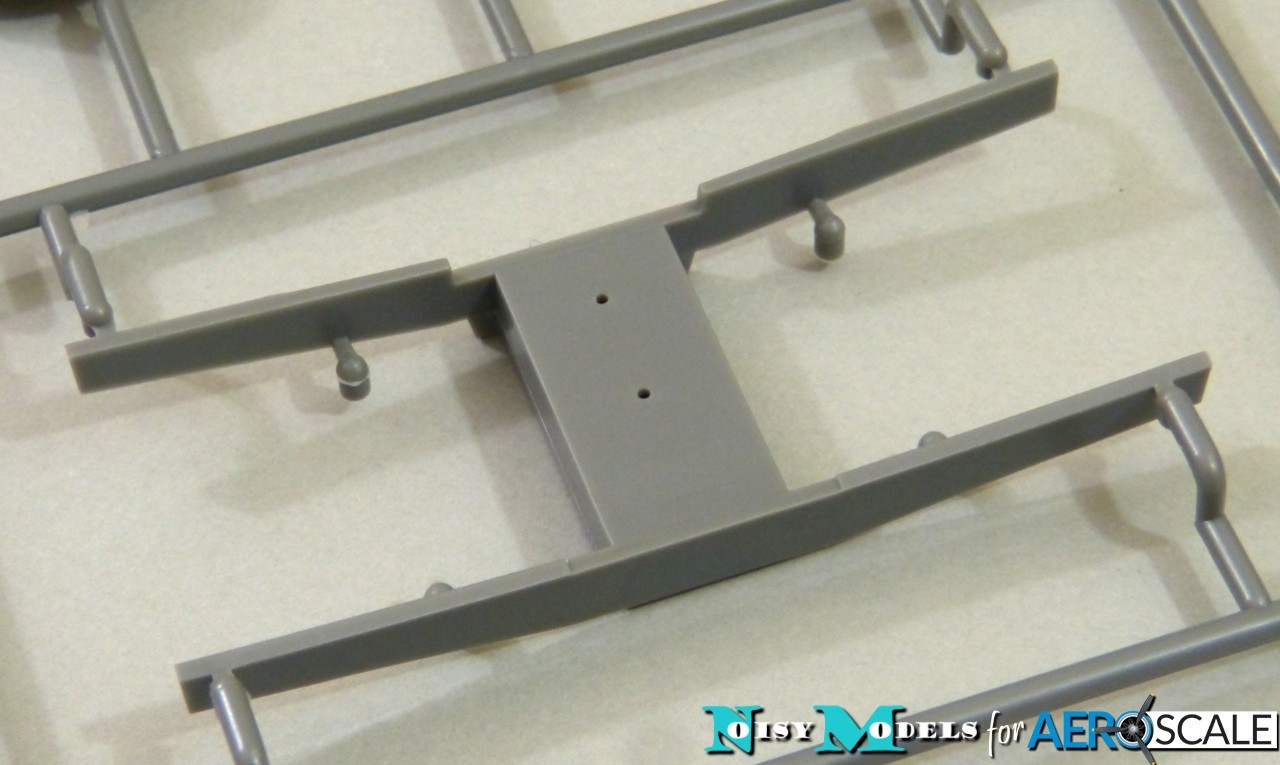
Turning to the crew areas, these are nicely detailed with a total of 24 parts, with pin-sharp decals for instrument faces and equipment dials. There's obviously a lot more you could add - seat harnesses being the most obvious omissions - but the basis is there for convincing offices. In something of a rarity these days, Airfix provide seated crew figures (a nice touch with the option to display the Gannet in flight), but they are moulded with rather soft details in identical poses and do look a bit "wooden".

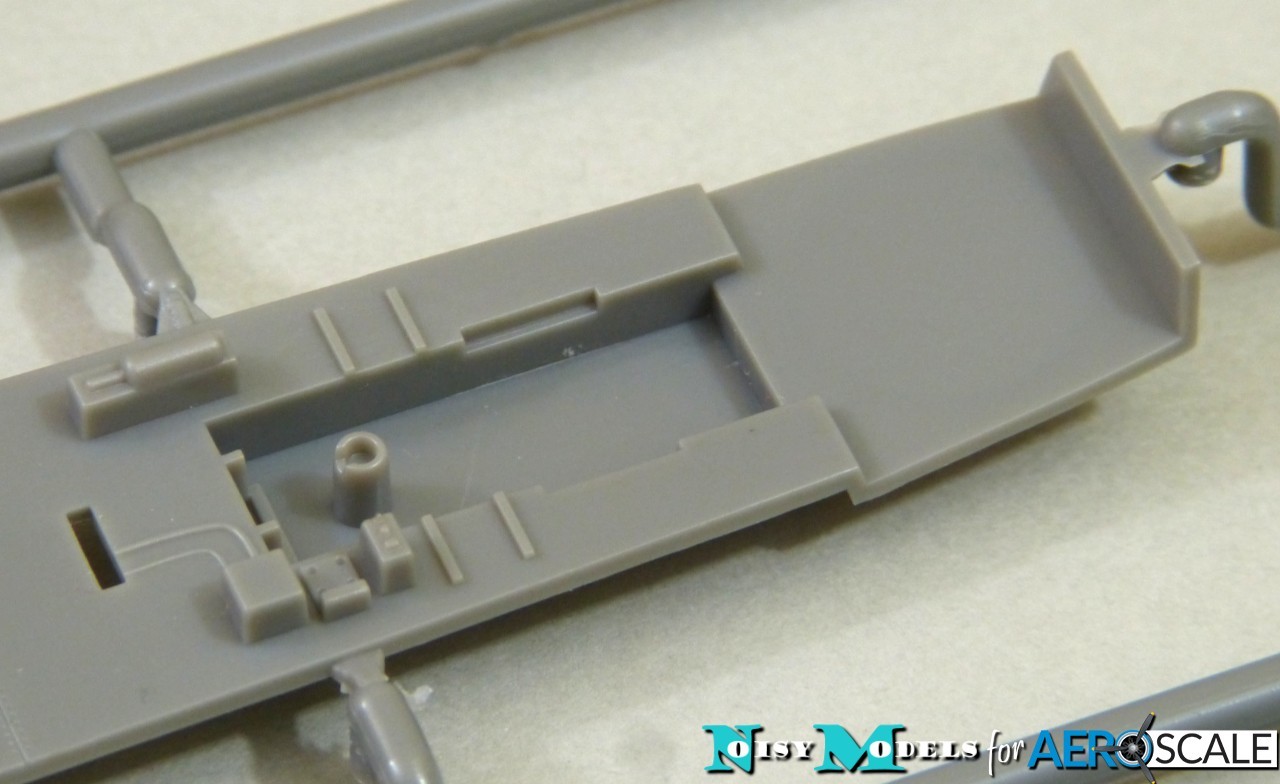
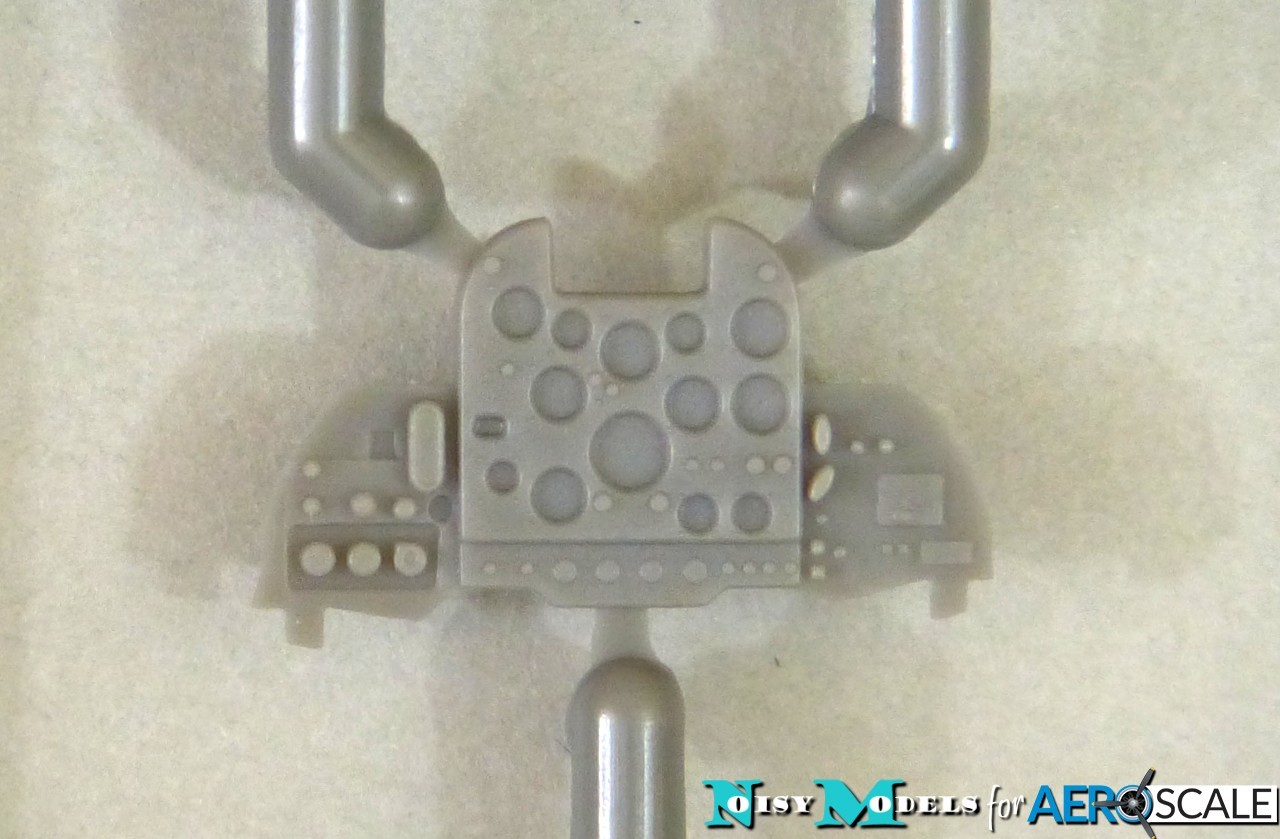
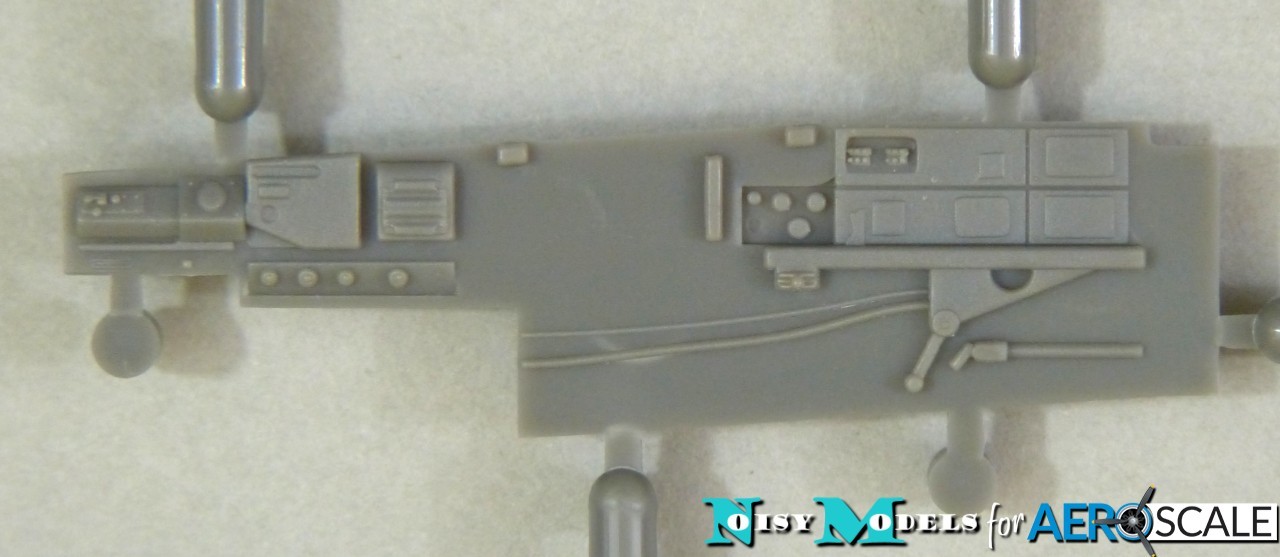
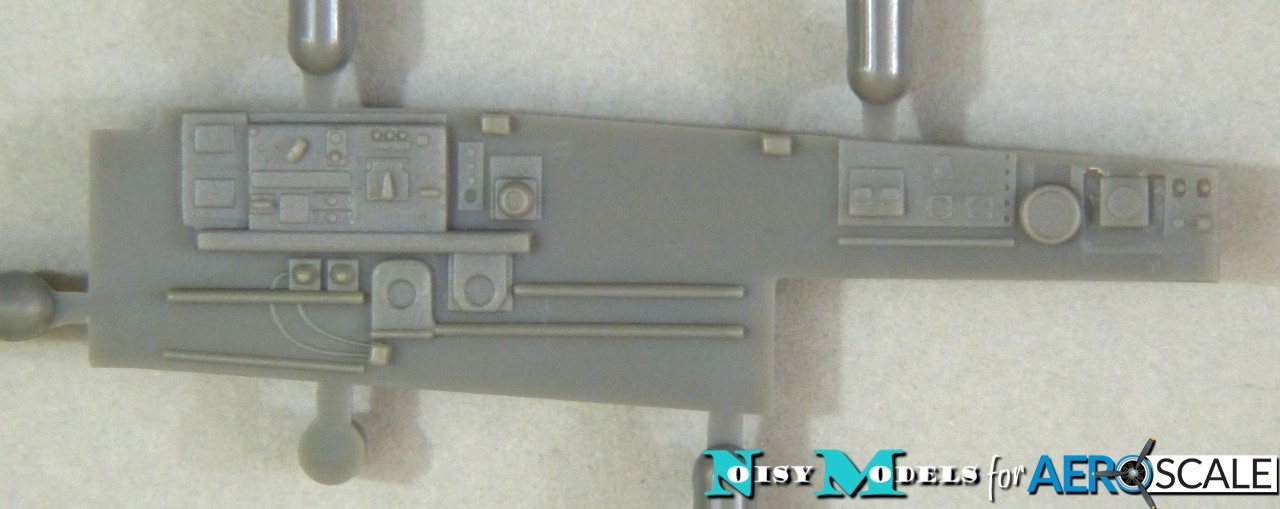
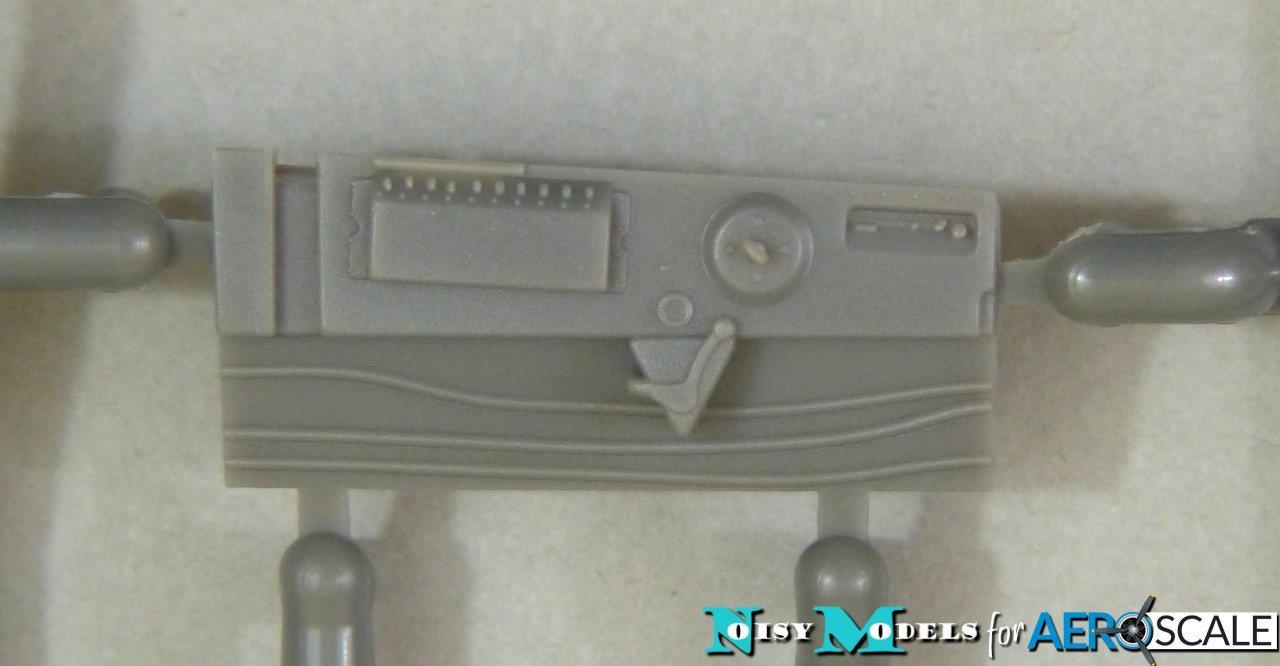
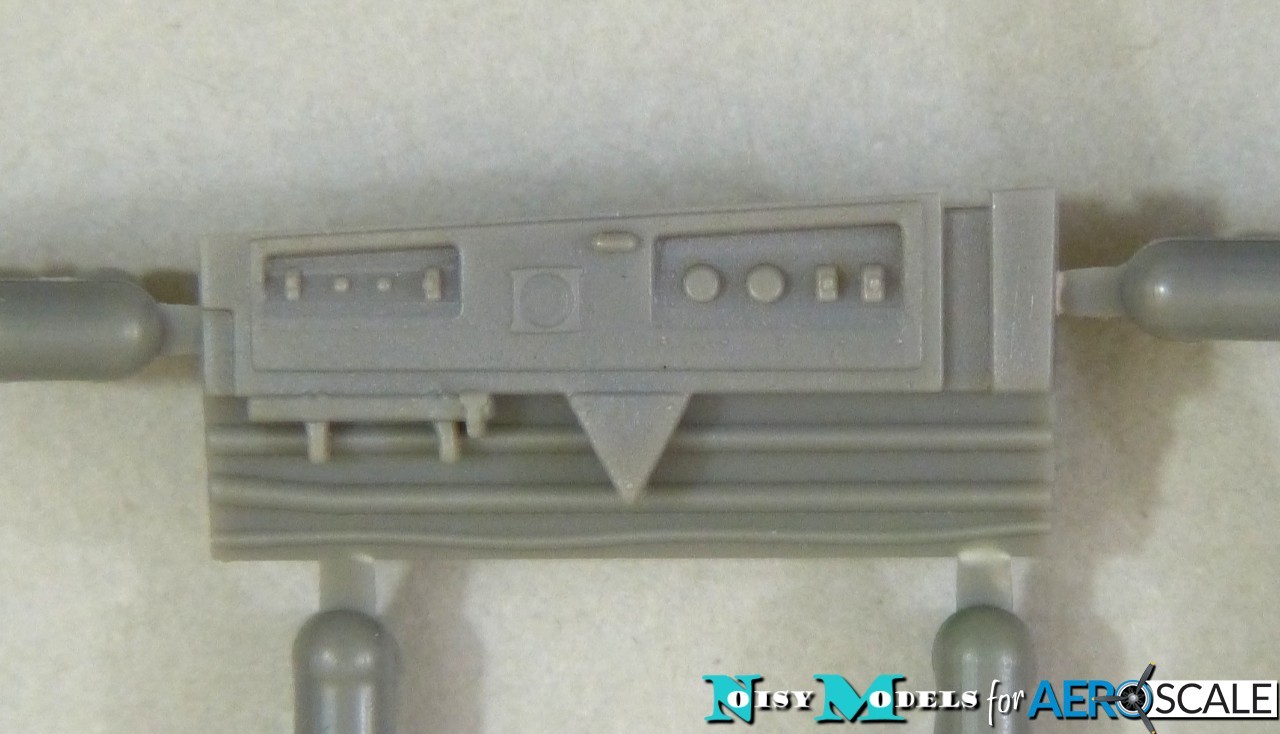

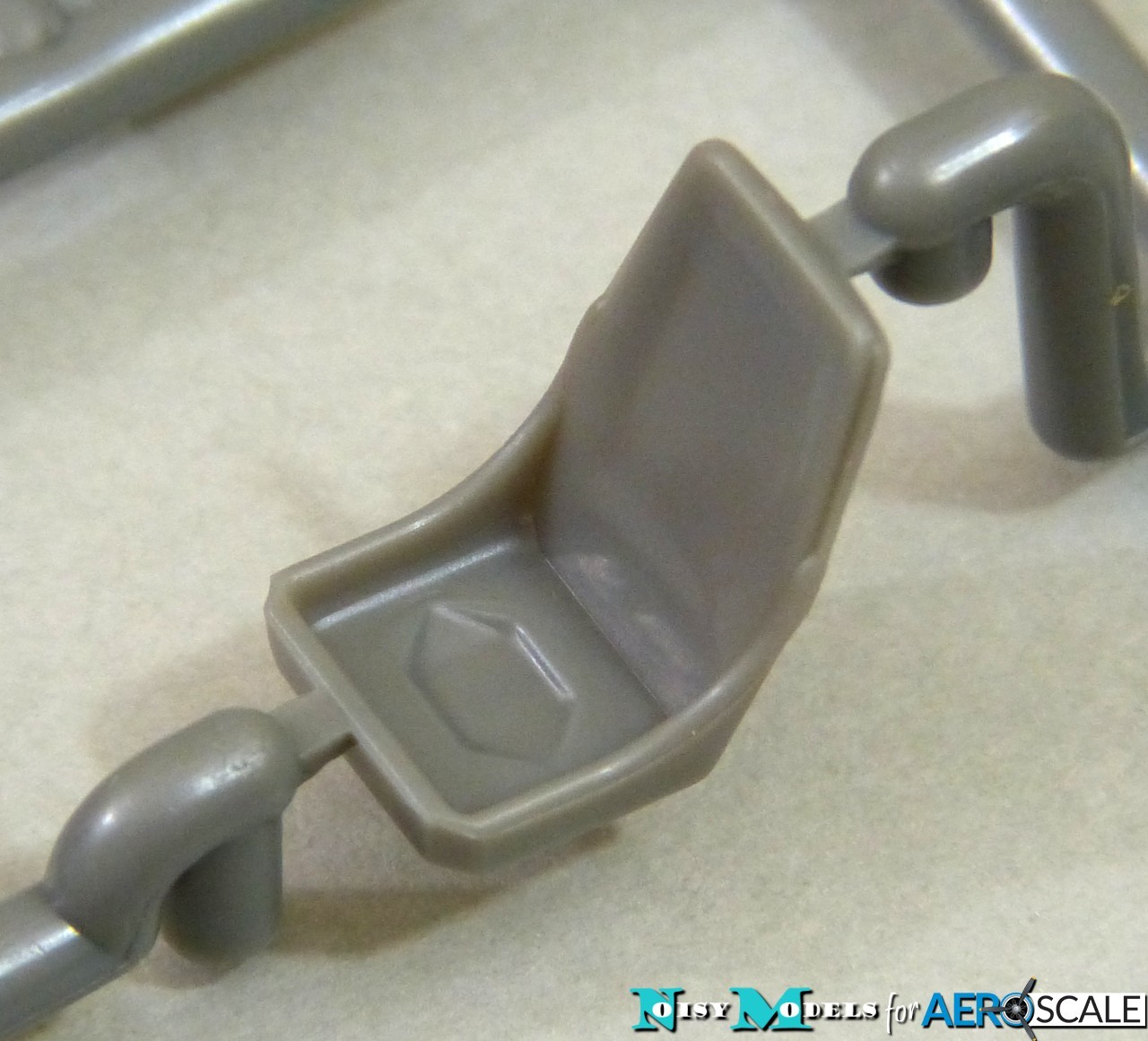
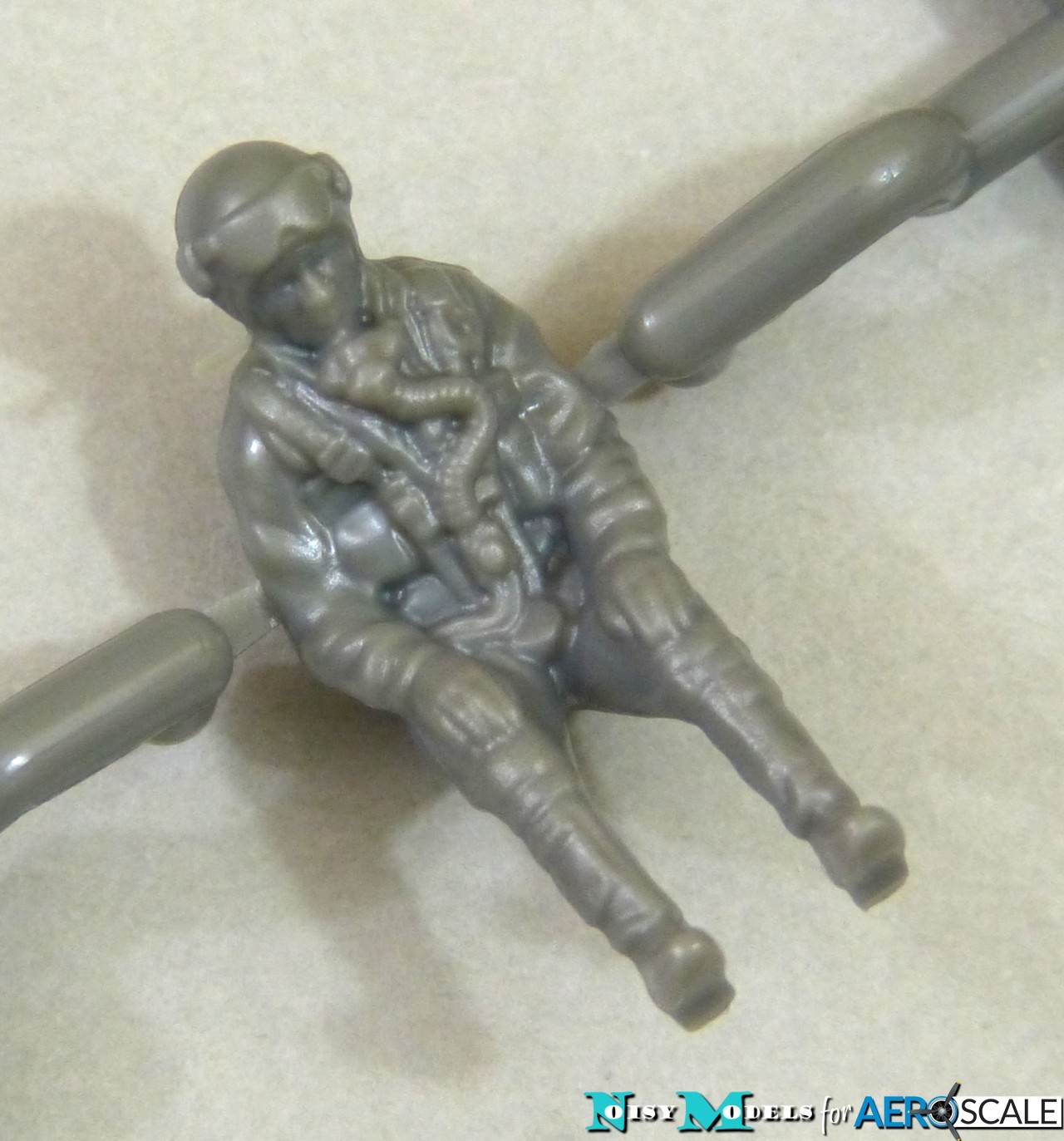
The mainwheel wells are boxed-in and have some excellent detail on the sides which will pop out nicely with a light wash and highlighting. Interestingly, Airfix also include two more "boxes" for each wing to act as internal supports. I don't know if they're strictly necessary, but I'd much rather have them than find out too late that the wings aren't rigid enough. Nice touch, Airfix.
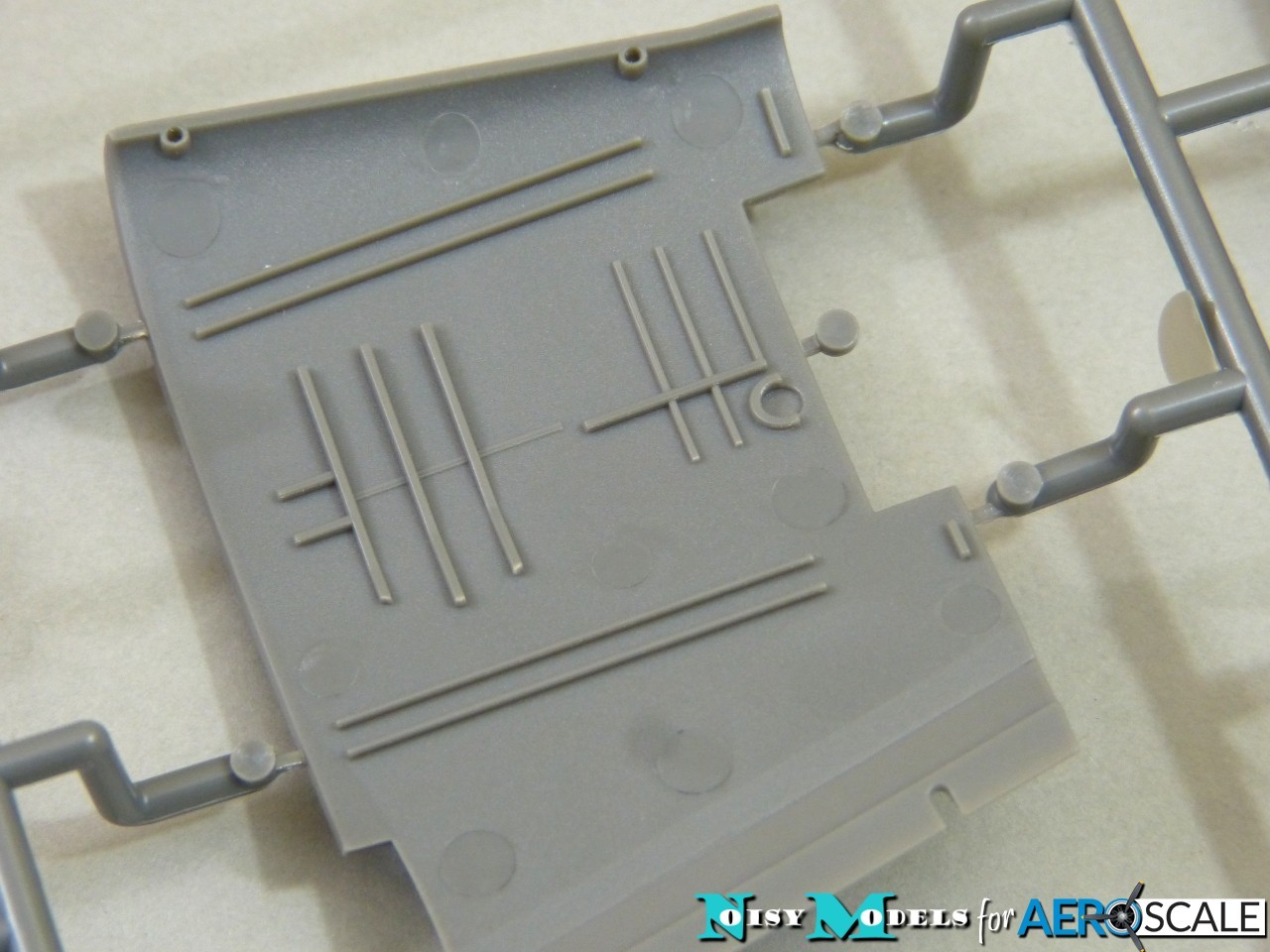


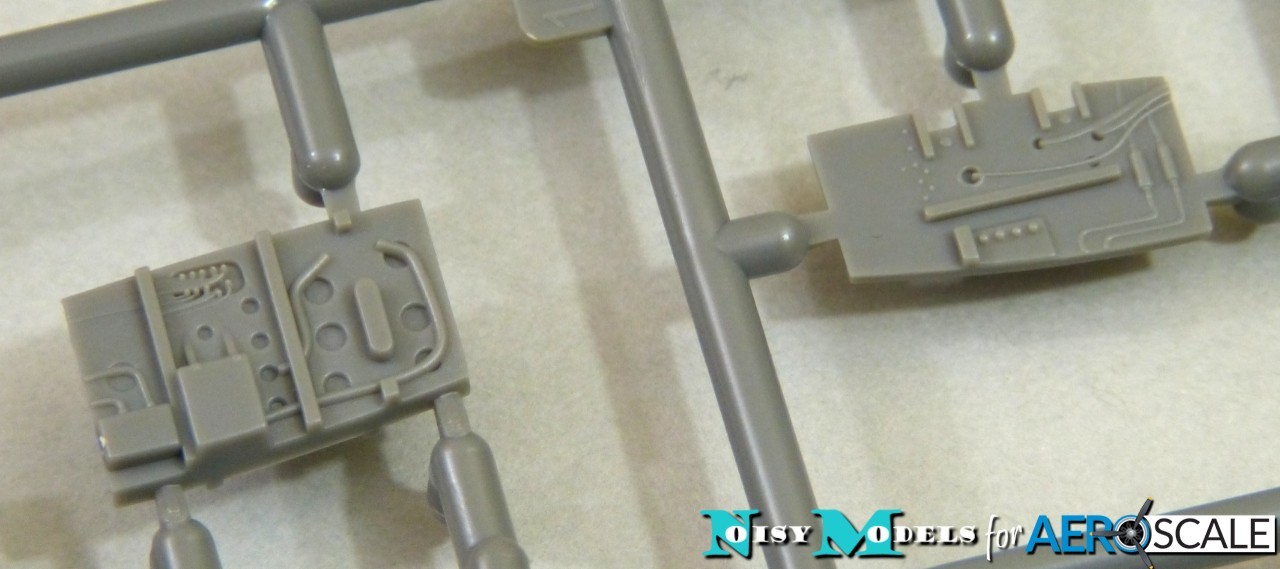
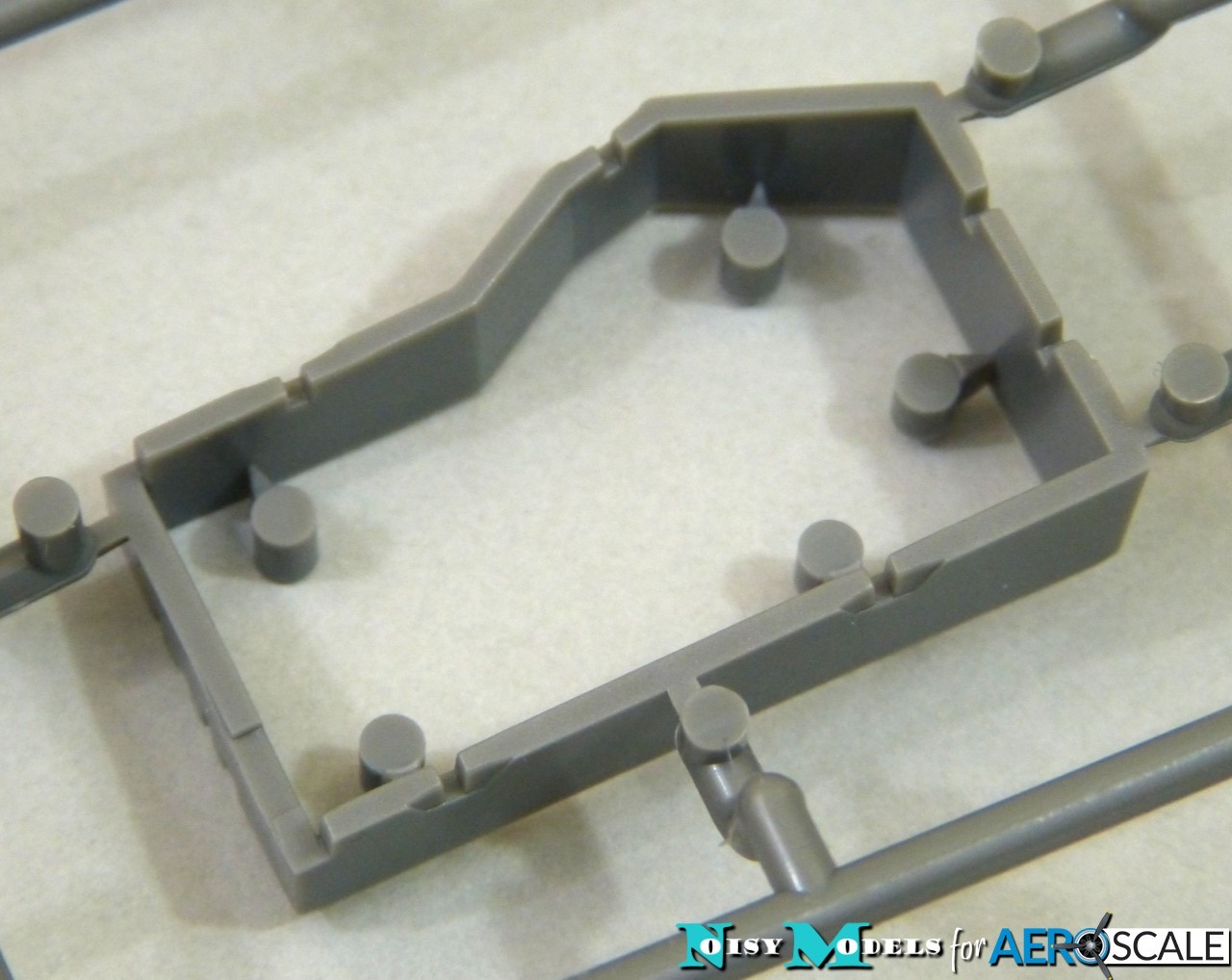
If you build your Gannet with folded wings (and for me it will be irresistible), there are very nicely detailed joints for each of the three sections, plus a supporting stay to attach later.

The undercarriage itself is quite nicely detailed, with sturdy legs and crisply moulded wheel hubs. A nice point for me is that the tyres are moulded "weighted" to give the completed model a realistic sit. The finished kit will be a tail-sitter, so don't forget to add nose weight. Thankfully, Airfix take the guessing out of this by showing how much is needed in the instructions.
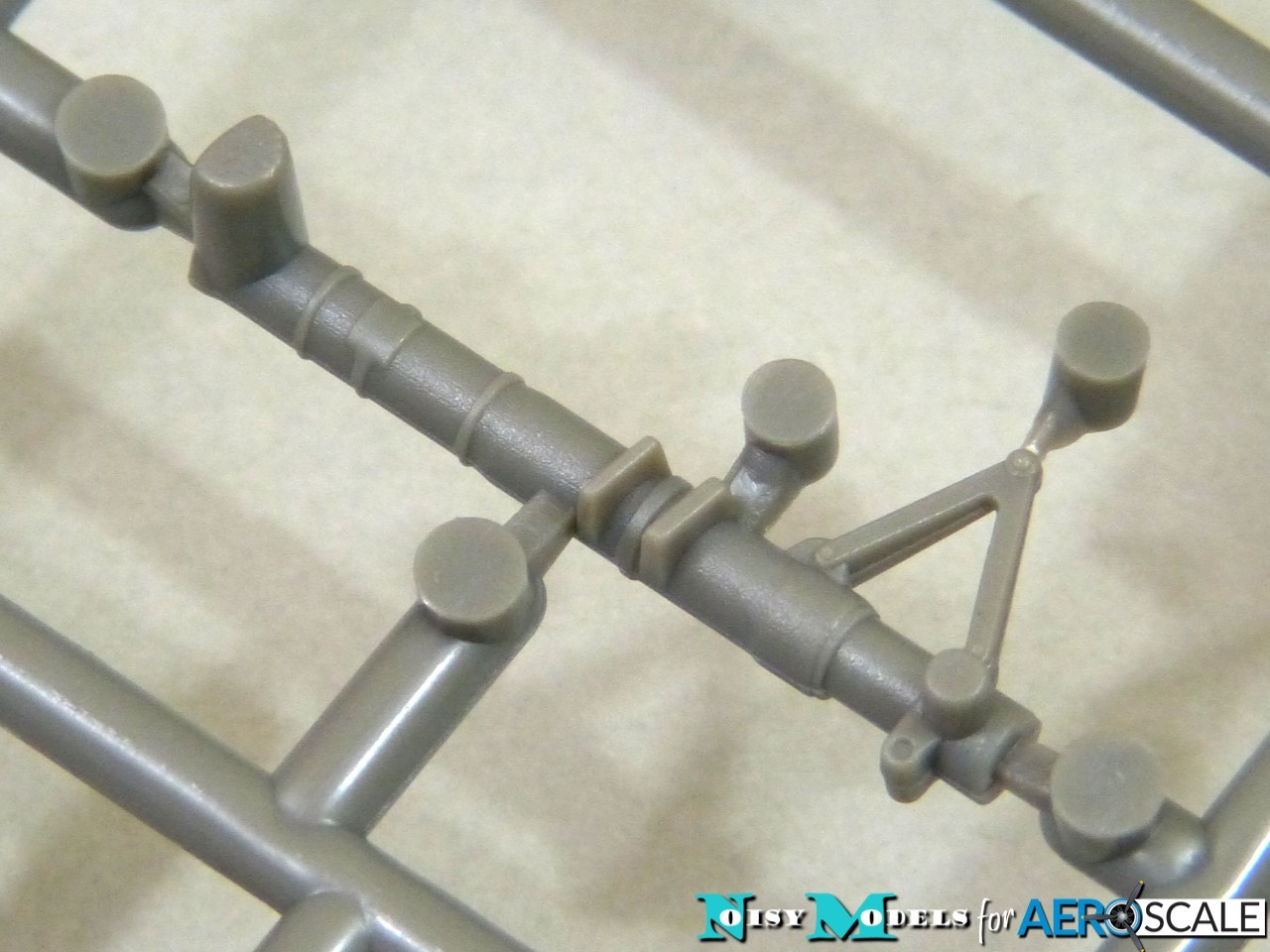


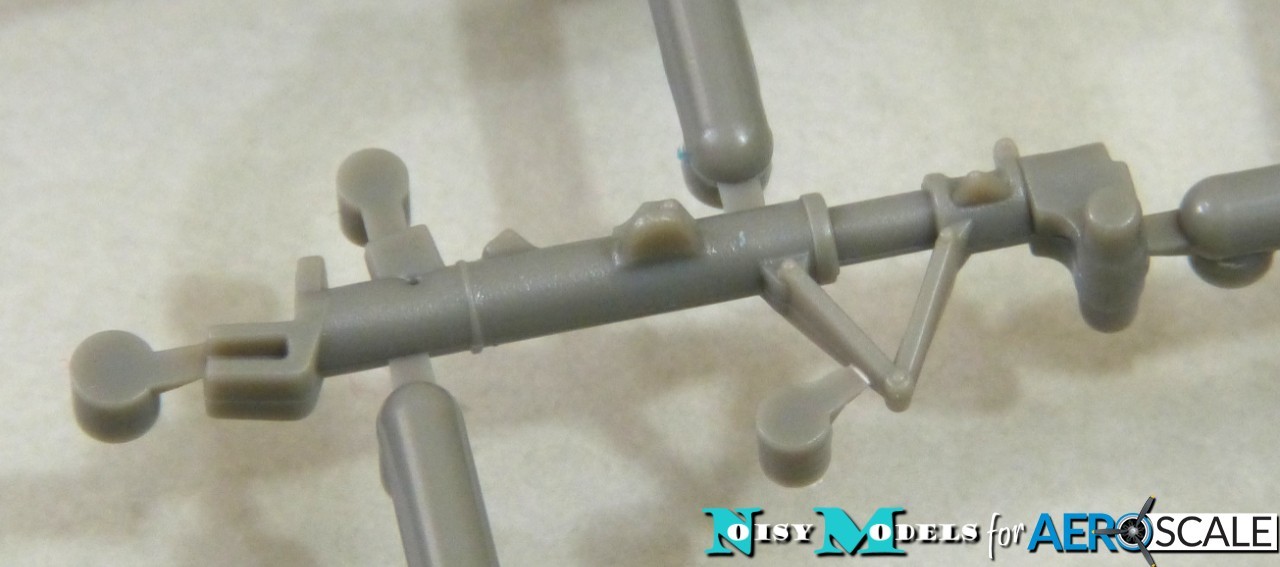

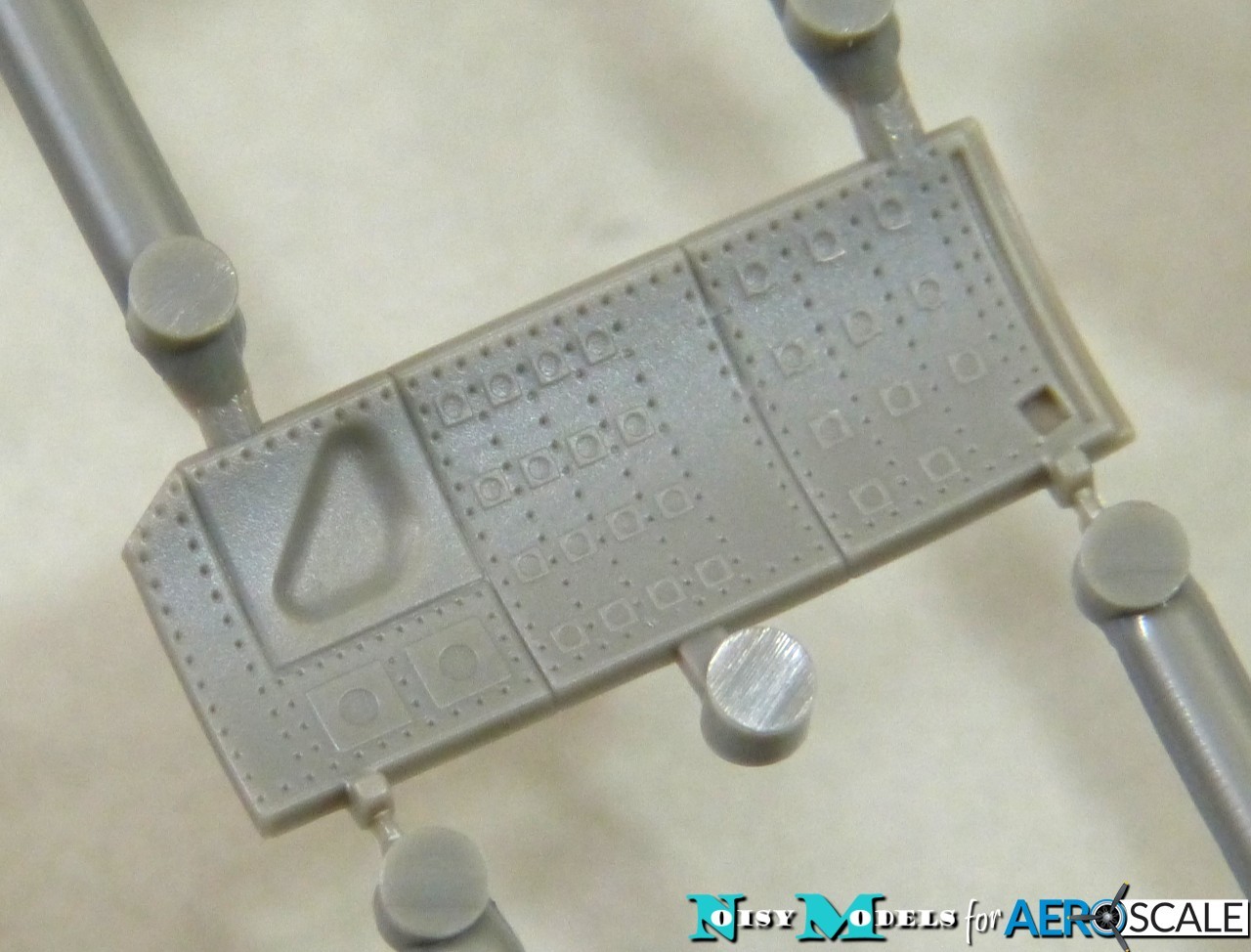
One of the Gannet's most distinctive features is its contra-rotating propellers, and these are tackled with a straightforward assembly that can be left free to spin if you wish.
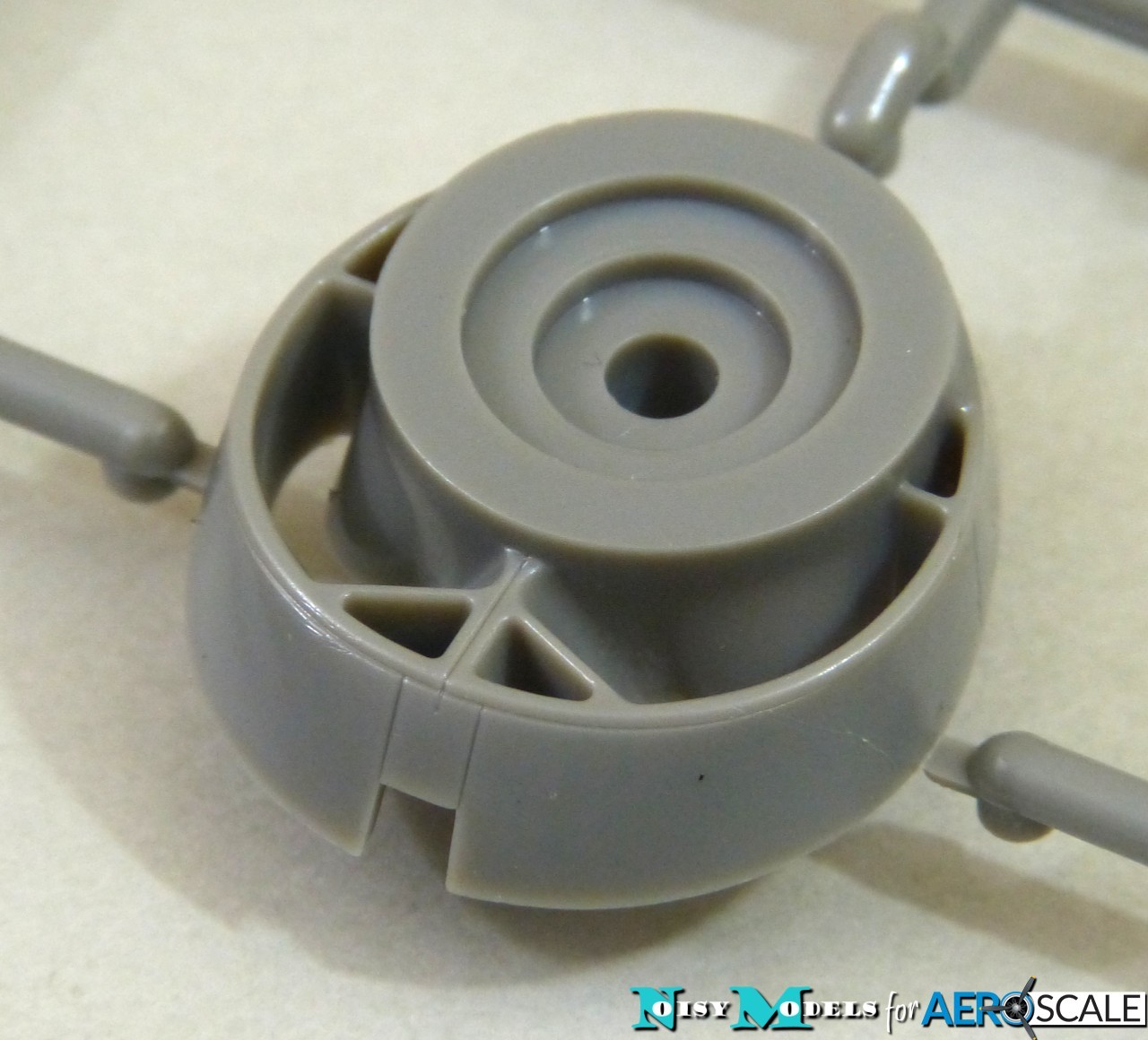

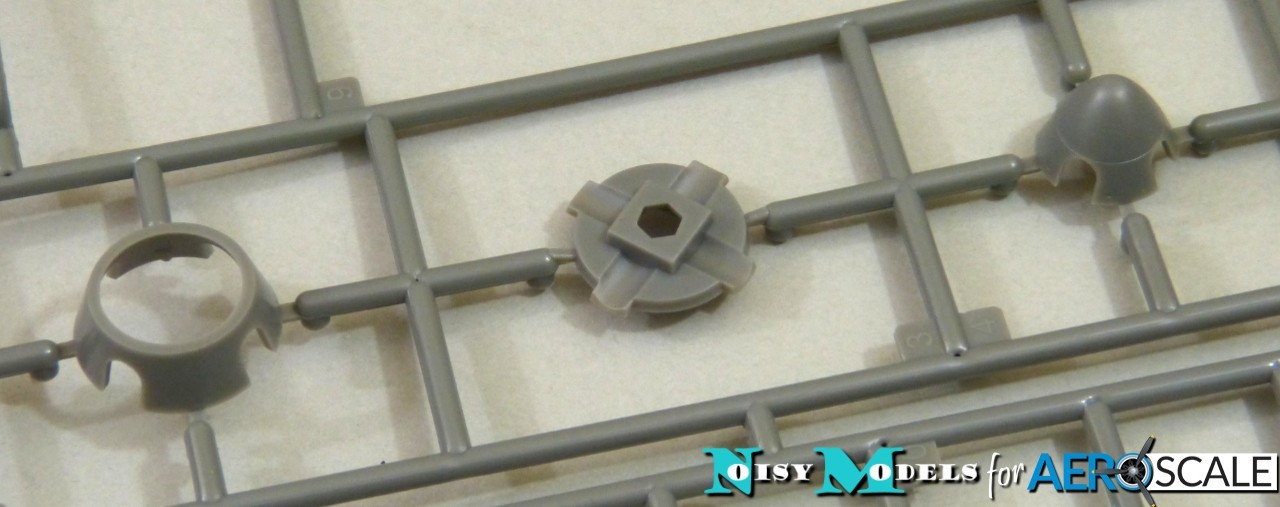
As noted earlier, the weapons bay can be displayed open, and Airfix provide a comprehensive range of stores to fill it, plus underwing racks and rockets to complete the possible load-outs. Included are:
2 x Mk. 30 torpedos
5 x T.1946 sonabuoys
6 x Mk.11 depth charges
8 x 60 lb underwing rockets
There are also pylons for drop tanks, but the latter aren't included in the kit.
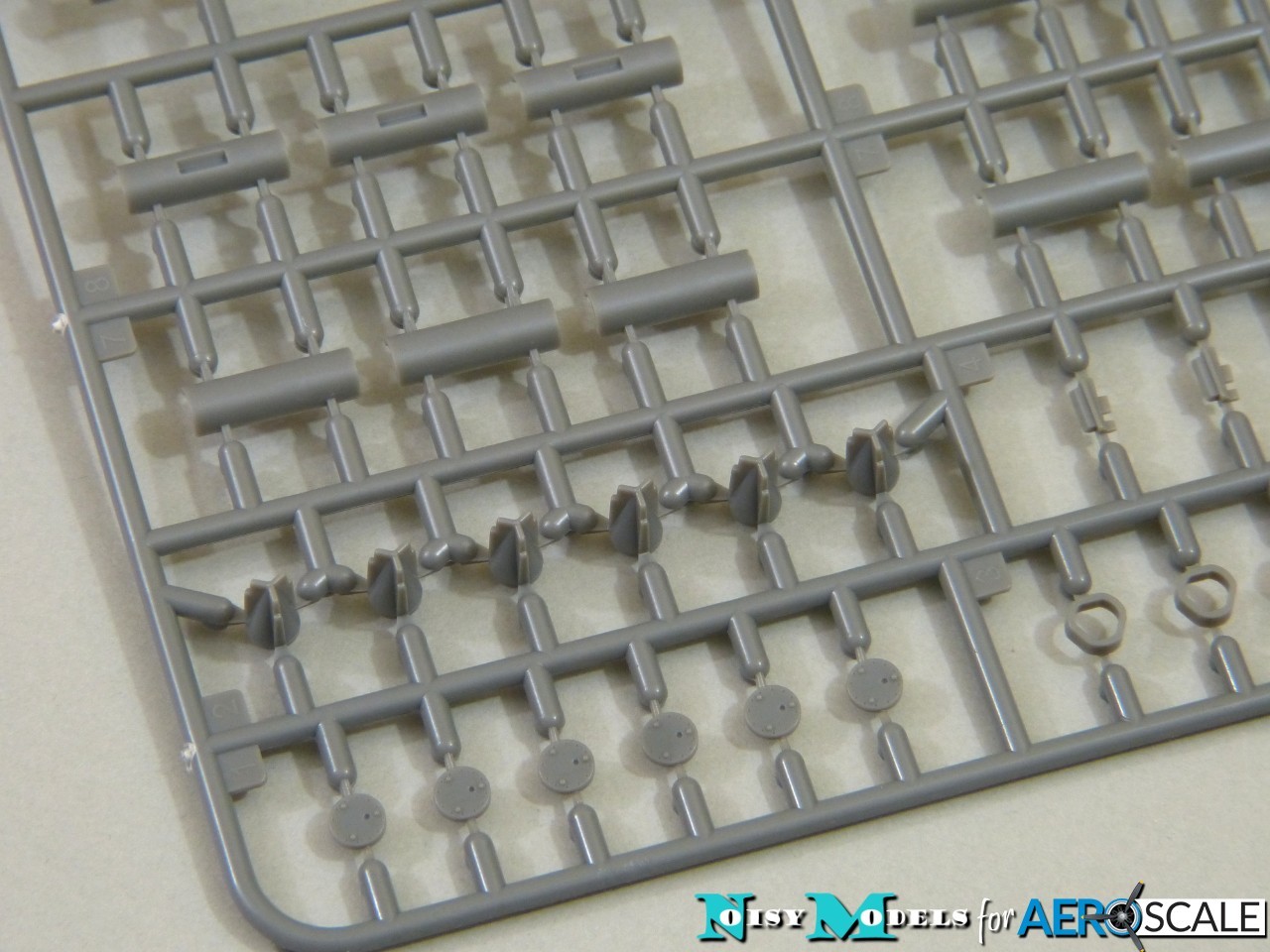
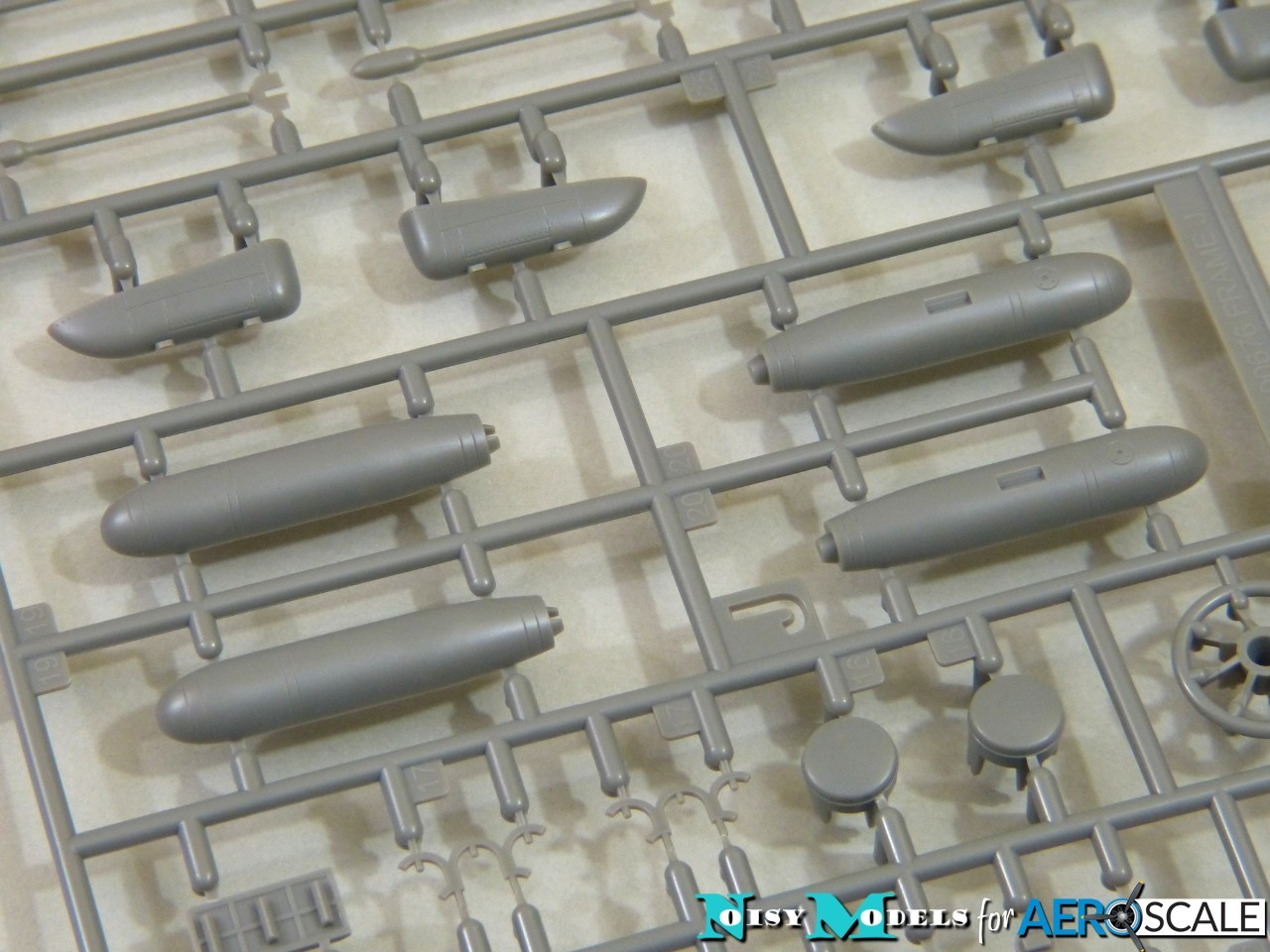
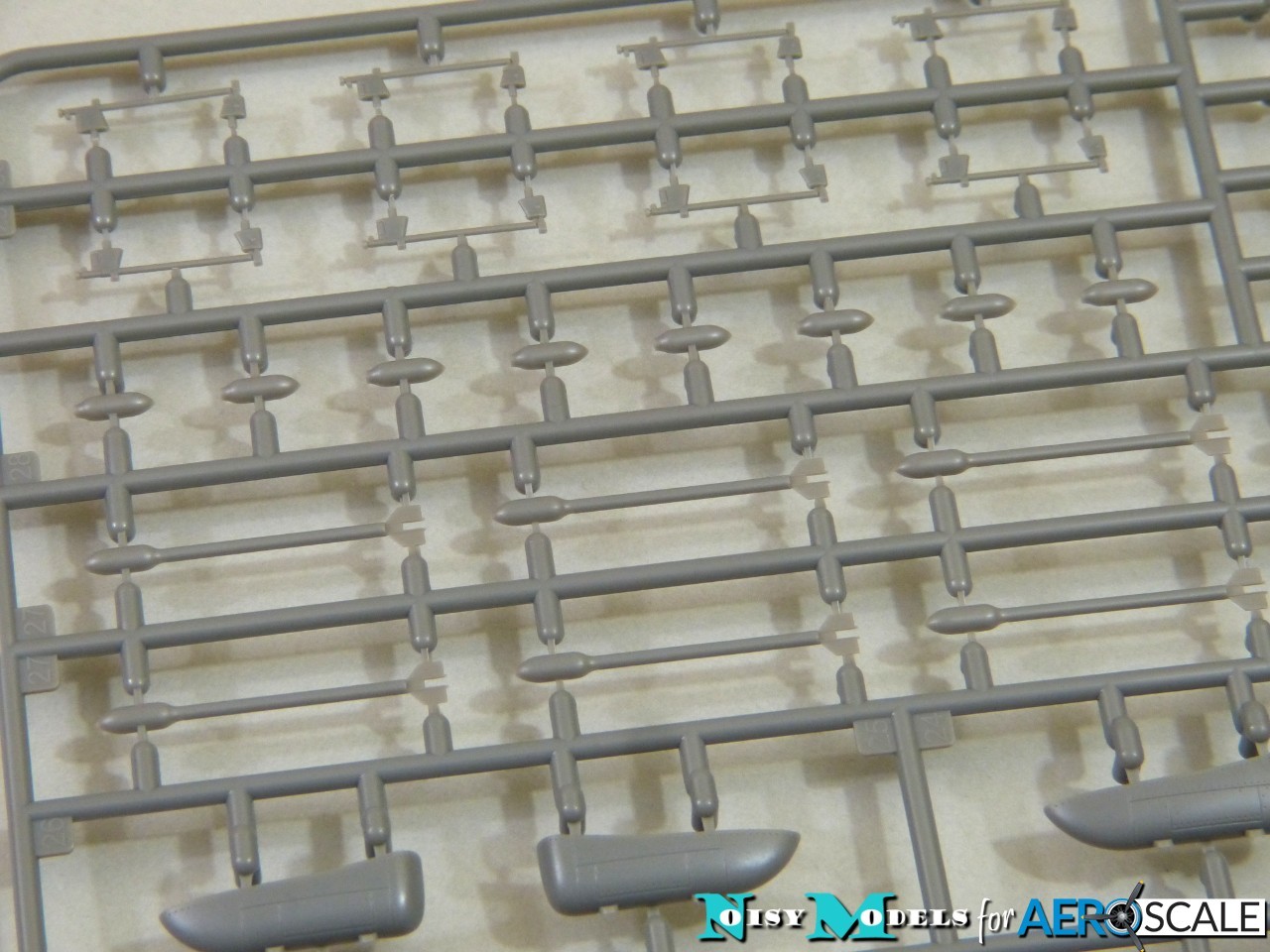
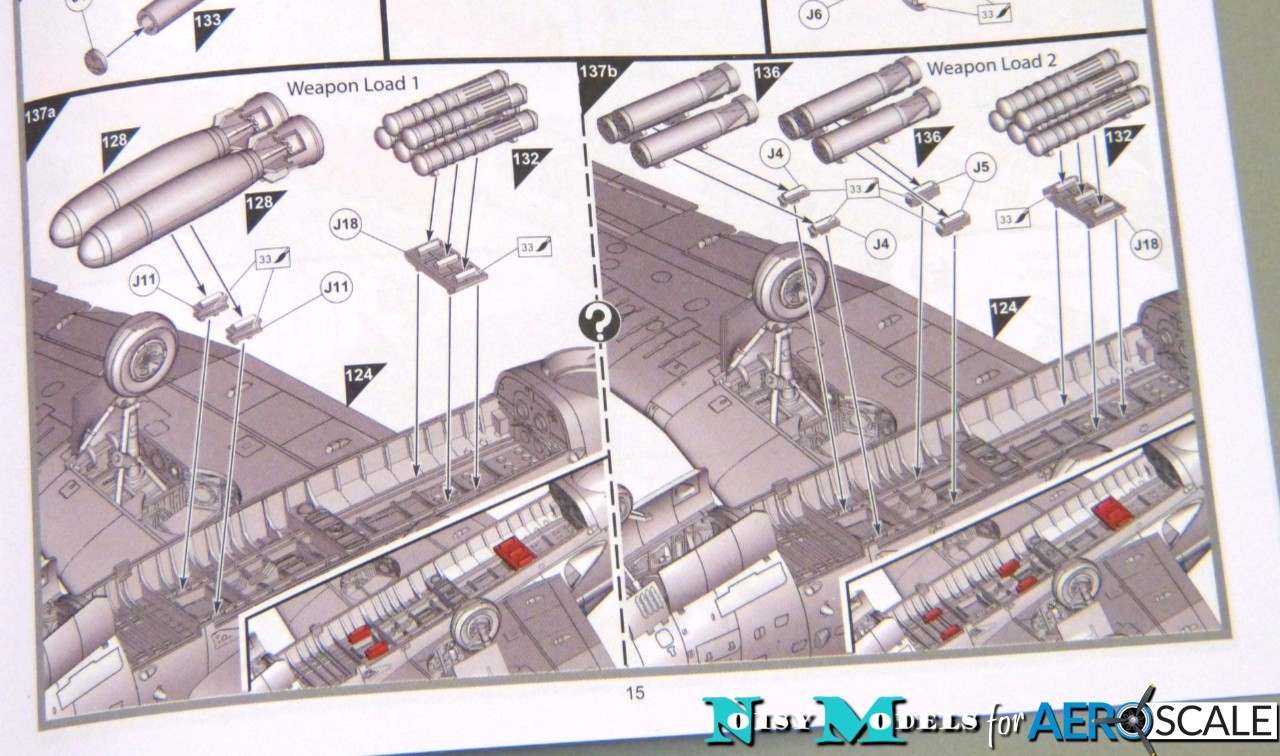
Rounding things off is a set of crystal clear transparencies. Each crew position features a realistically bulged canopy that can be posed open. As you'd expect, the bulges need a multi-part mould, so there are light moulding lines to polish off. One clever bit of foresight by Airfix is the inclusion of a spare windscreen without a wiper to allow you to add an aftermarket item if you wish.

Instructions & Decals
The instructions are provided as a 20-page A4 booklet on rather flimsy plain paper which I feel detracts slightly from the overall high-quality impression of what is quite an expensive model.
Considering that I cut my modelling teeth on Airfix kits back in the 1960s, you'd be forgiven for assuming that I'm still most at home with Airfix's way of presenting assembly guides. Sadly, this isn't the case and, somewhere along the way, Airfix took a design decision that flies in the face of what's become the industry norm - and I just find the resulting instructions cluttered and hard to follow. For me, they actually manage to make the model seem more complicated than it really is.
With the Gannet, most of the diagrams rather small and they're shaded, making some of them murky, with previous sub-assemblies highlighted in red. This seems pointless, because most modellers won't need to be reminded what they've built in the stage before - particularly in a kit like the Gannet, which is most likely aimed at experienced modellers. But a bigger issue for me is that red is a universal warning colour and is the norm in modelling for highlighting a problem or "surgery needed", so I find it hard going to have it in almost every illustration - and there are no less than 168 stages in the Gannet(!).
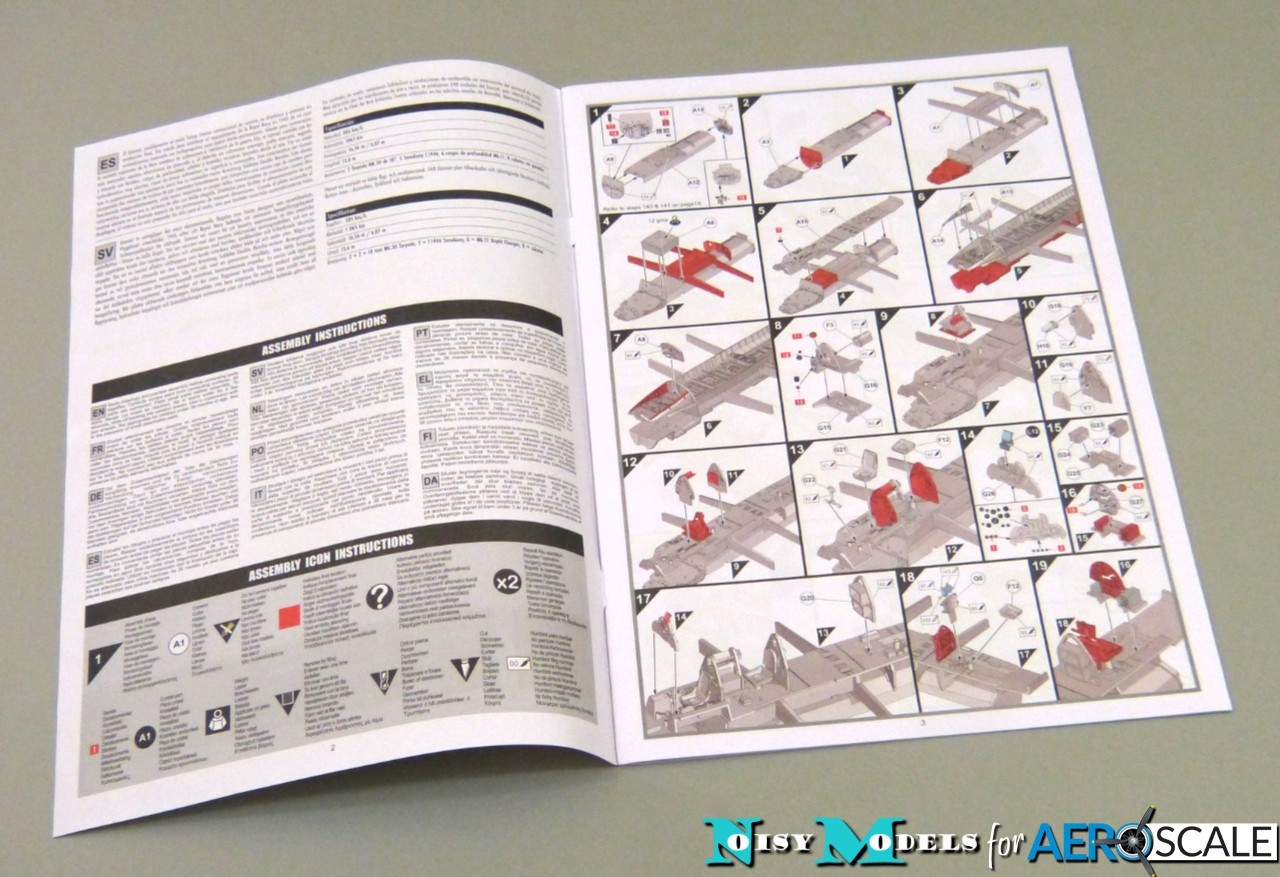
Don't get me wrong - all the information you need is in the assembly guide, and it has a lot of ground to cover with the multiple configurations in which you can build the Gannet - but this really is a kit where it will pay dividends to study the instructions carefully and plan exactly what you're doing ahead of diving in.
Colour matches for Humbrol paints are included for most details throughout assembly.
The exterior painting guides for the three featured aircraft are printed in colour on glassy paper, along with a very useful full-page diagram showing the positions of the servicing stencils for the airframe and ordnance.
Fairey Gannet AS.4, s/n XA460, 849 Naval Air Squadron, RNAS Culdrose, 1959

Fairey Gannet AS.4, s/n XA418, 815 Naval Air Squadron, HMS Ark Royal, 1958

Fairey Gannet AS.1, s/n XA335, 847 Naval Air Squadron, RAF Nicosia, Cyprus, 1957
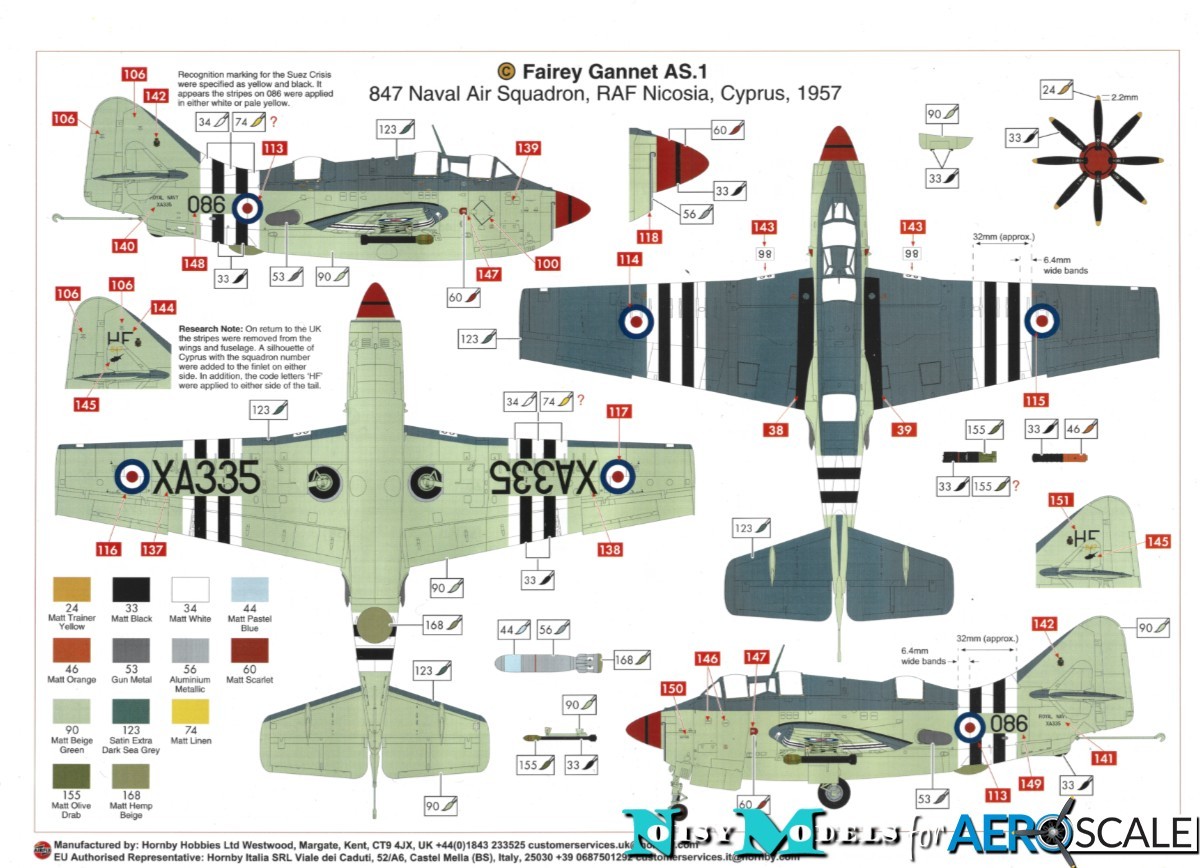
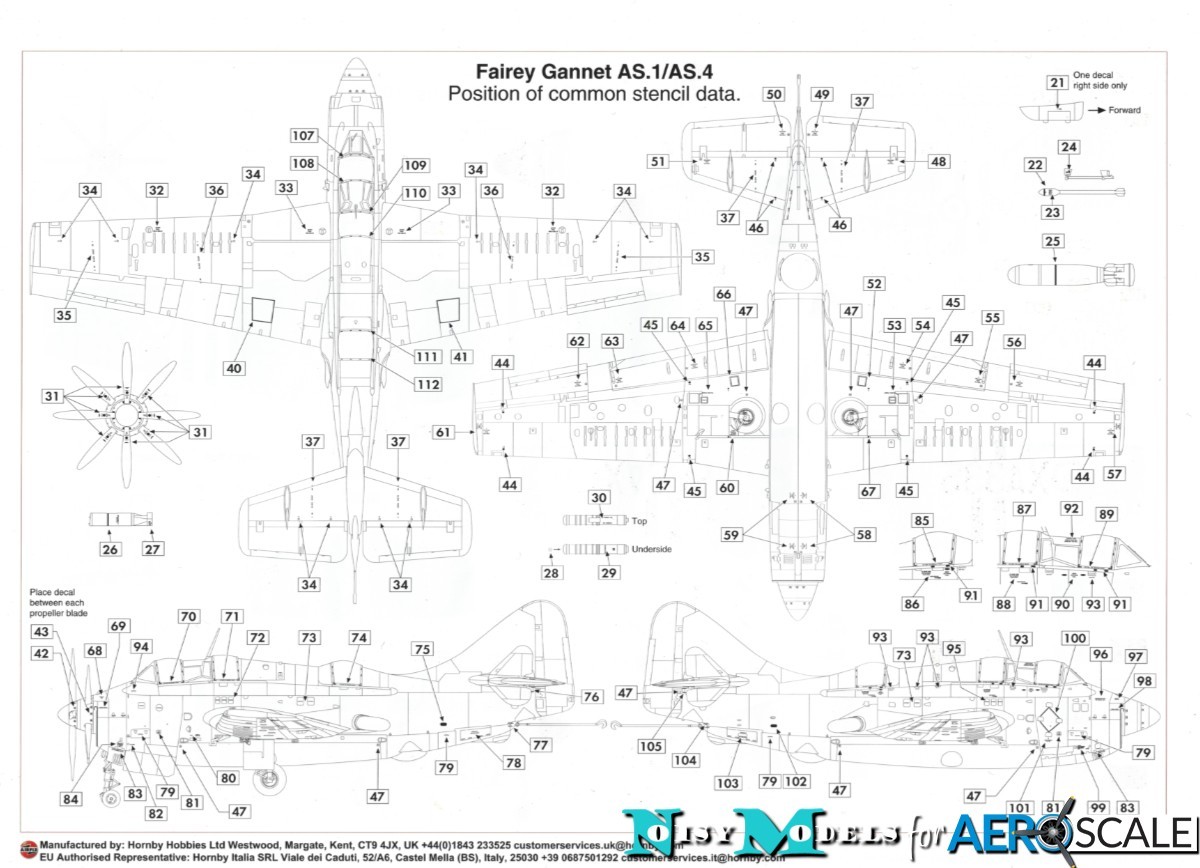
The decals are superb quality - hardly surprising, because they're custom-printed for Airfix by Cartograf. It's a huge sheet, and the register and colours look spot-on, with virtually no excess carrier film on the glossy items except where it's used to group elements. Almost half the space on the sheet is devoted to a mass of servicing stencils, so the full-page diagram is especially welcome.
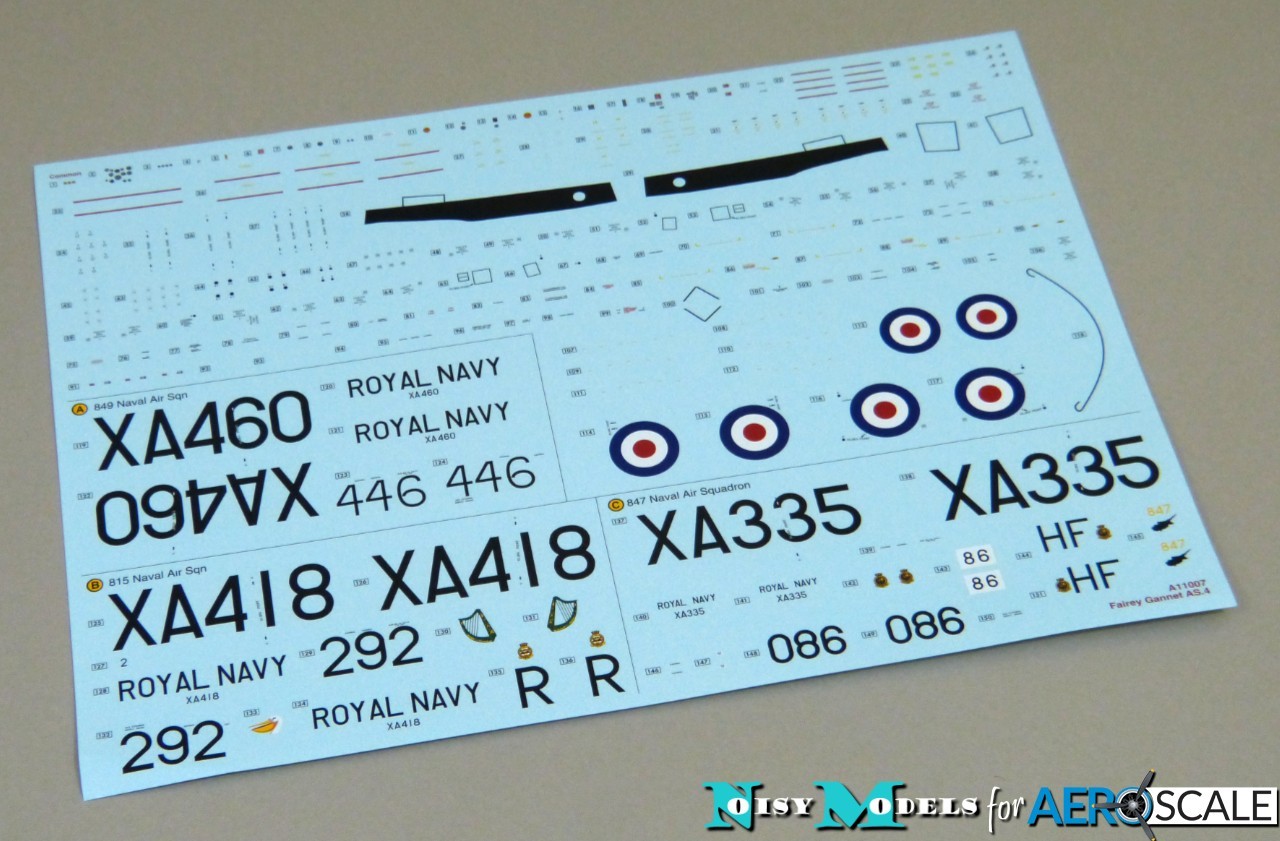
Conclusion
Airfix's 1:48 Fairey Gannet is a very impressive kit that deserves to be a huge success with anyone who likes Cold War aircraft or naval aviation in general. Looking at the quality of the parts, it shouldn't present any problems for newcomers to the hobby if they take their time, but it also offers the kind of detail that will appeal to experienced modellers - and it will provide a great starting point for the plethora of aftermarket upgrades which are almost certain to appear in its wake.
I've obviously been rather critical of the instructions, but I'm genuinely delighted with my purchase and I'm really looking forward to building Airfix's Gannet. It's not a pocket-money kit, but it represents excellent value for money in my opinion.
Item #A11007 is available now from Airfix - Price: £54.99
https://uk.airfix.com/products/fairey-gannet-14-a11007
Please remember, when contacting retailers or manufacturers, to mention that you saw their products highlighted here - on AEROSCALE










